On April 26, 1986, a series of explosions destroyed Reactor No. 4 of the Chernobyl Nuclear Power Plant. Several hundred plant workers and firefighters tried to extinguish the blaze, which lasted for ten days and released a radioactive cloud that circled the globe. More than 50 plant employees and first responders died in the early days following the disaster. But it was not only they who risked their lives—several photographers also arrived at the site, capturing moments of chaos and heroism in the weeks and months that followed.
This gallery spans nearly forty years of Chernobyl’s history—from the first hours after the catastrophe to the present day. It begins with rare images of the destroyed Reactor No. 4, the efforts to contain radiation, and the first steps in the cleanup operation. Over the years, Chernobyl has become a grim symbol of human error and courage.
The photographs depict the construction of the sarcophagus, the transformation of the area into a forbidden zone, the resurgence of nature, and finally, recent events: a drone strike on the sarcophagus during Russia’s war against Ukraine. Chernobyl remains a place where the past and the present continue to intersect.
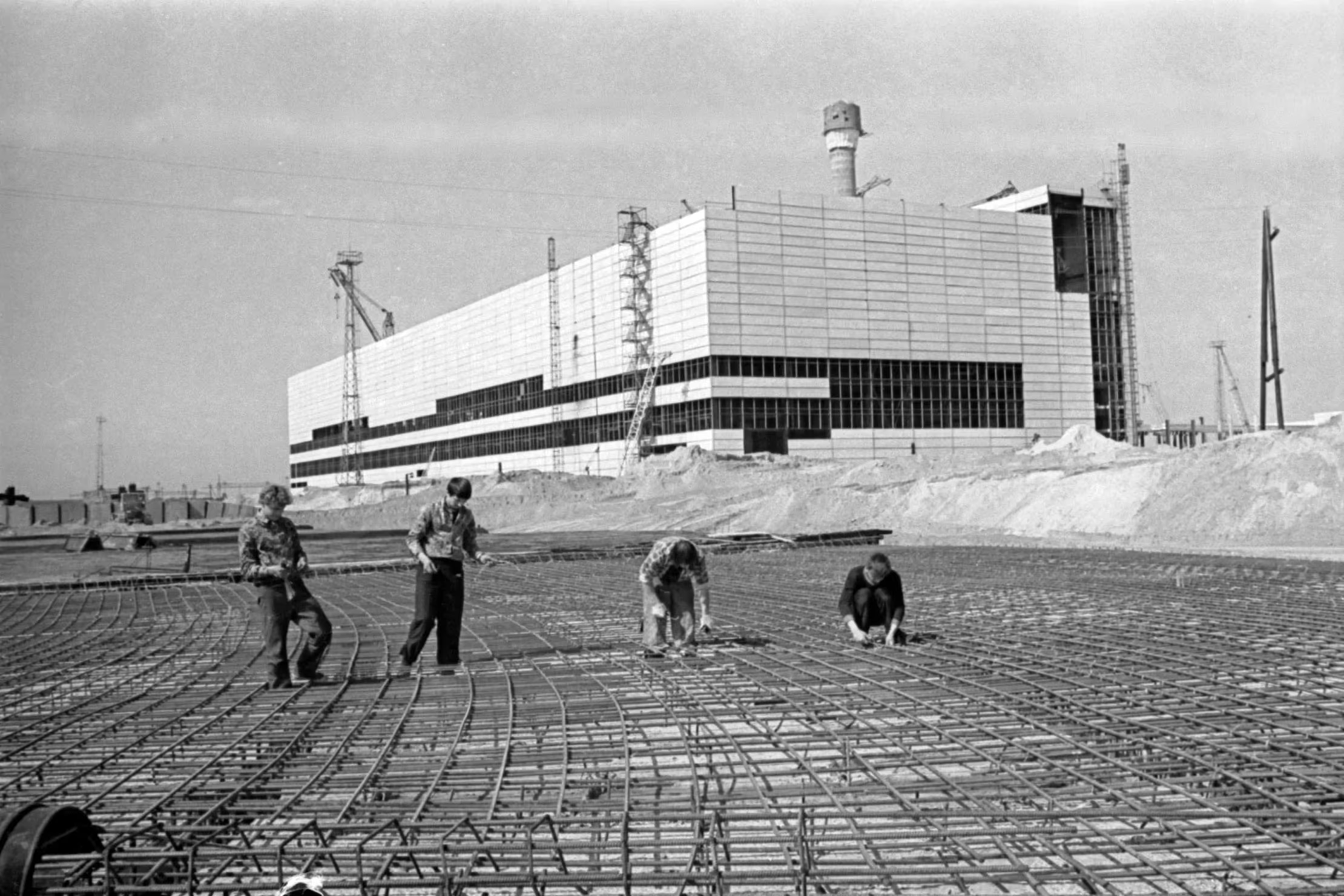
Construction of the Chernobyl Nuclear Power Plant. Installation of channel structures. April 12, 1975.
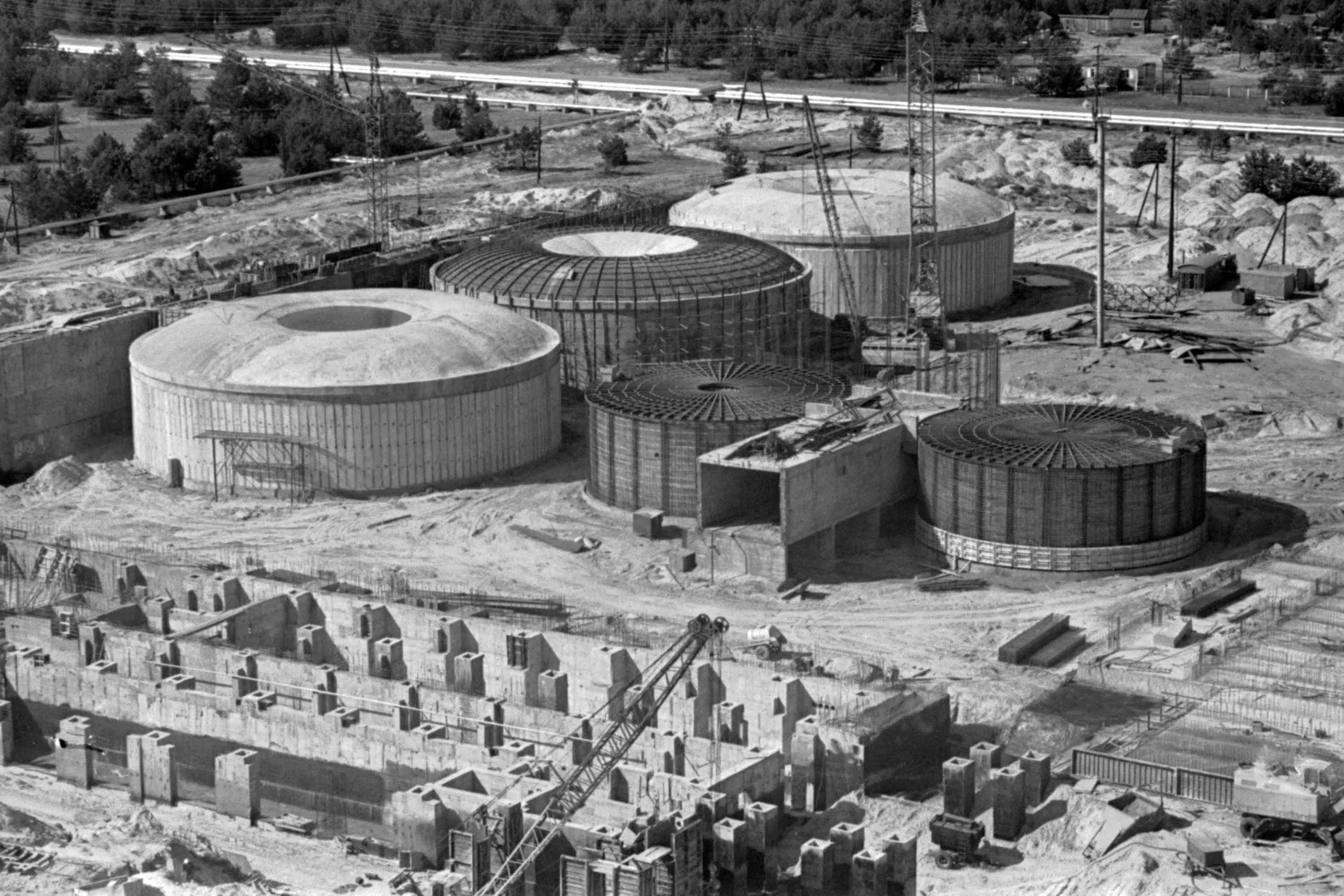
One of the construction sites of the Chernobyl Nuclear Power Plant. September 5, 1975.
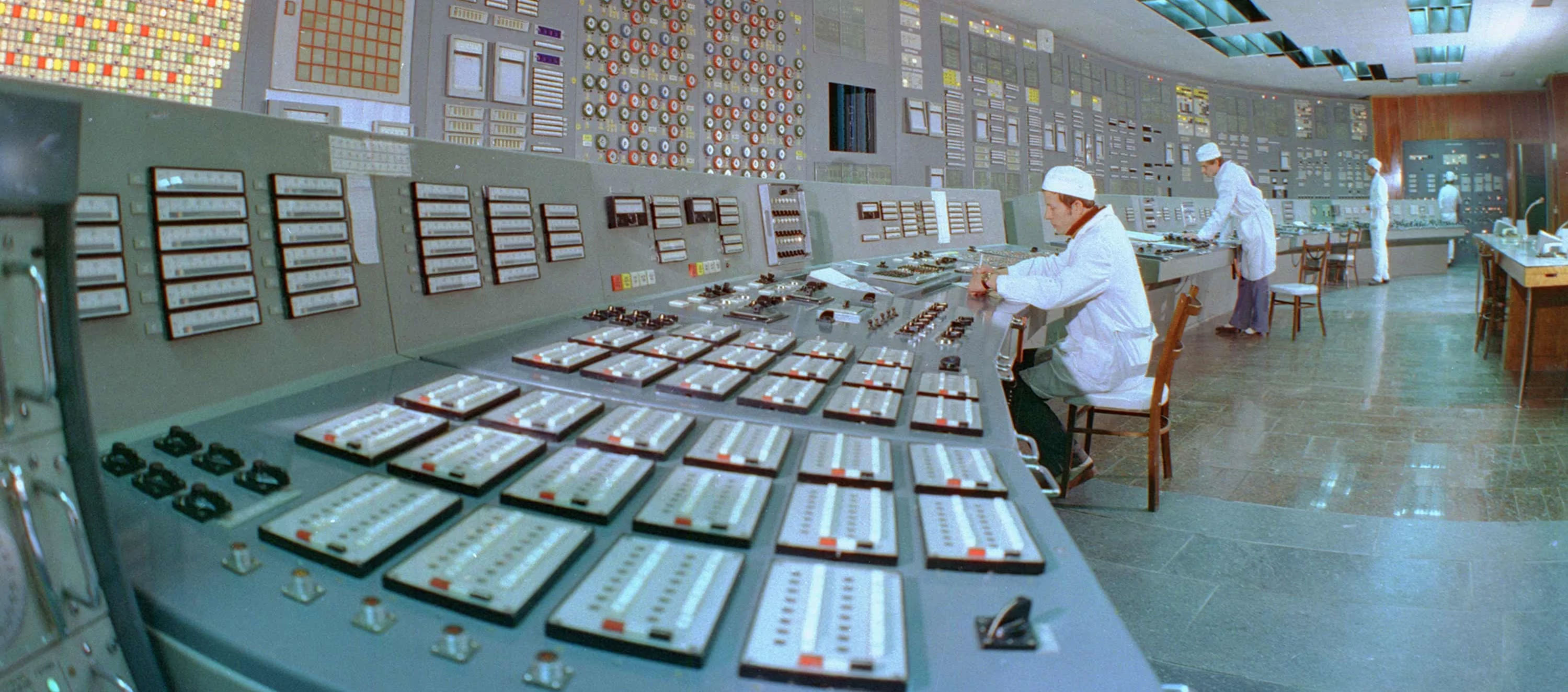
Control room of the Chernobyl Nuclear Power Plant. October 1977.
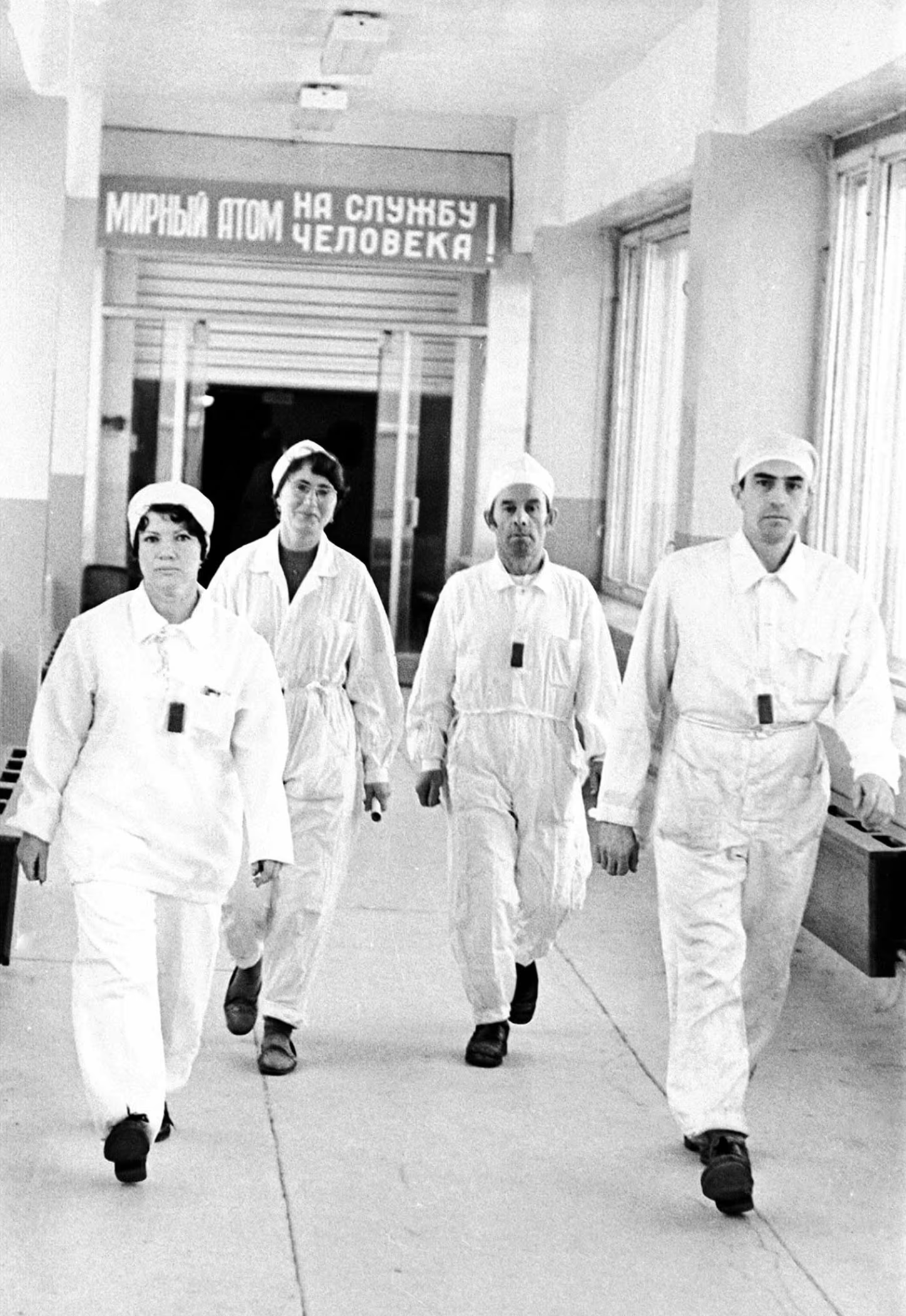
Chernobyl Nuclear Power Plant employees before the start of their shift. December 21, 1978.
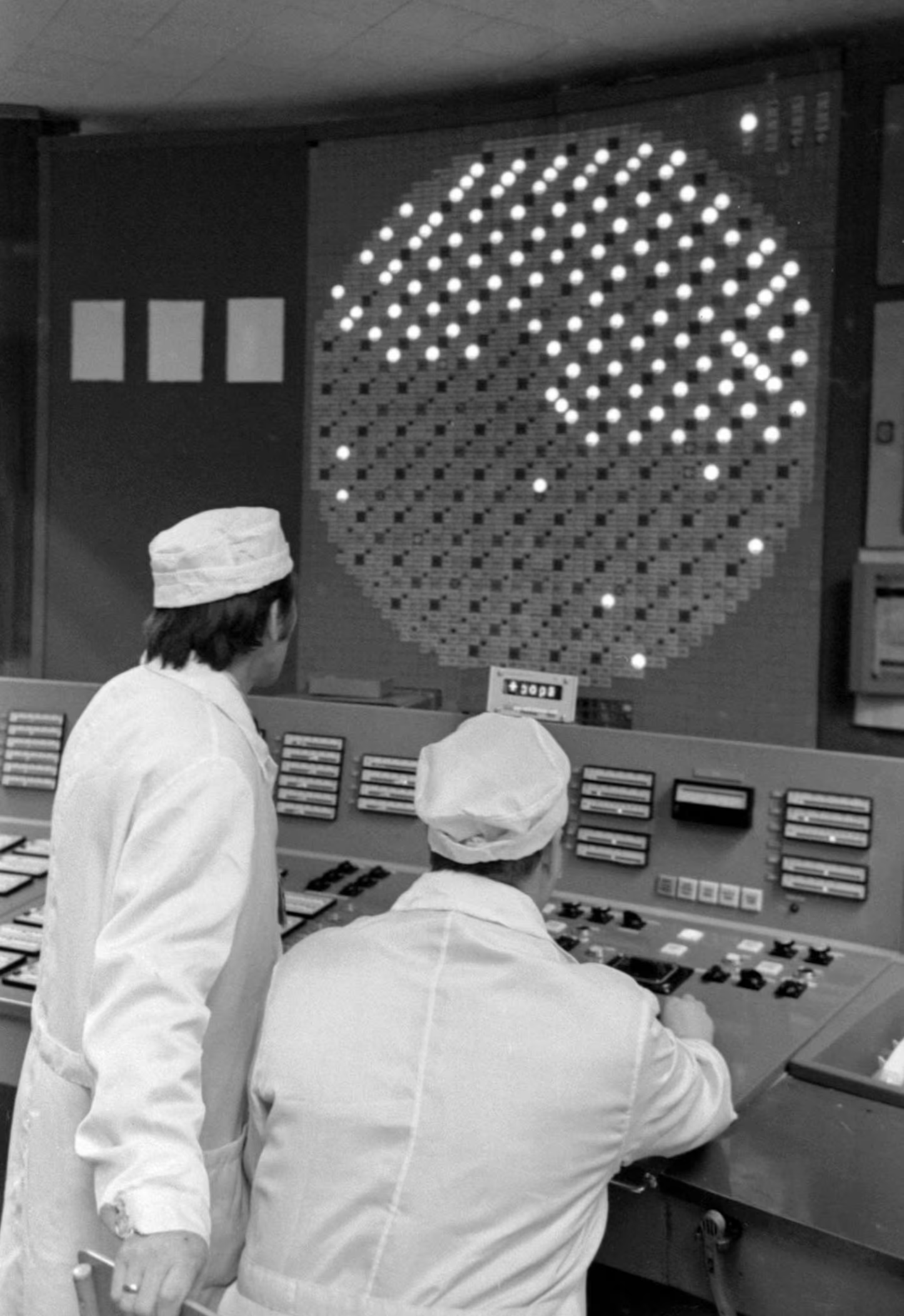
Main control panel of the first unit at the Chernobyl Nuclear Power Plant. October 26, 1977.
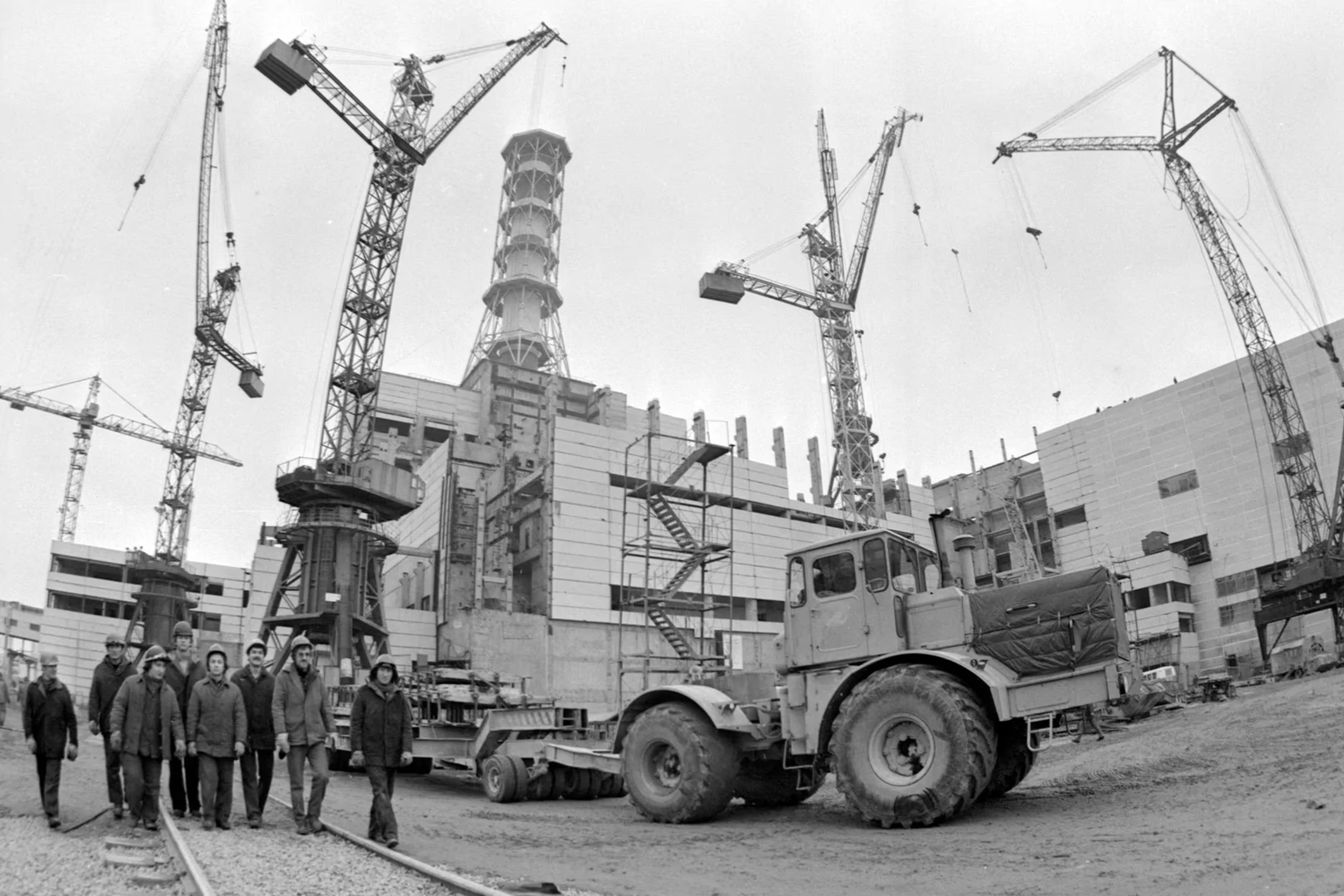
Installation of the fourth reactor unit at the Chernobyl Nuclear Power Plant. 1982.
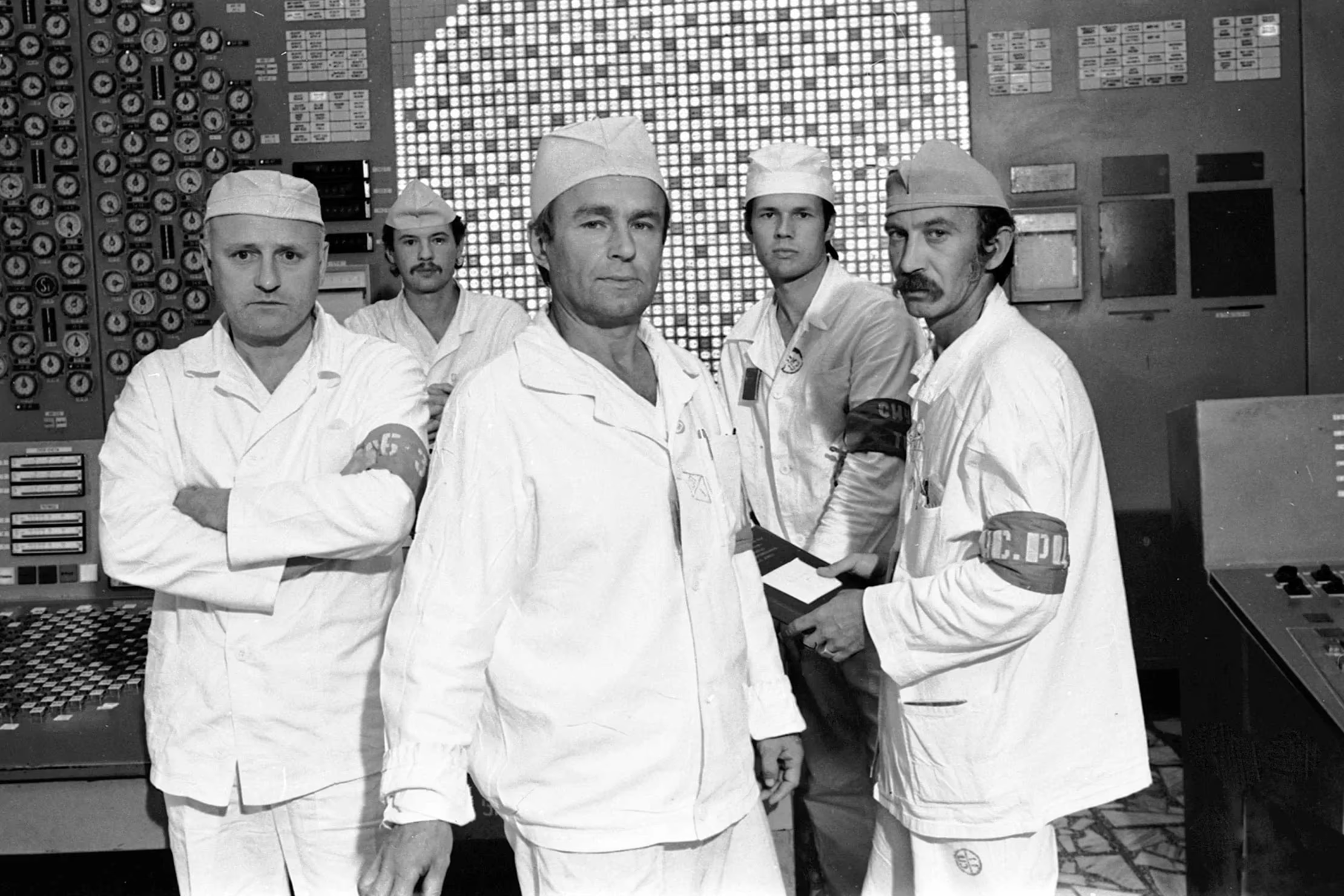
Employees of the Chernobyl Nuclear Power Plant. August 21, 1984.

Nuclear reactor of the Chernobyl Nuclear Power Plant. October 1977.
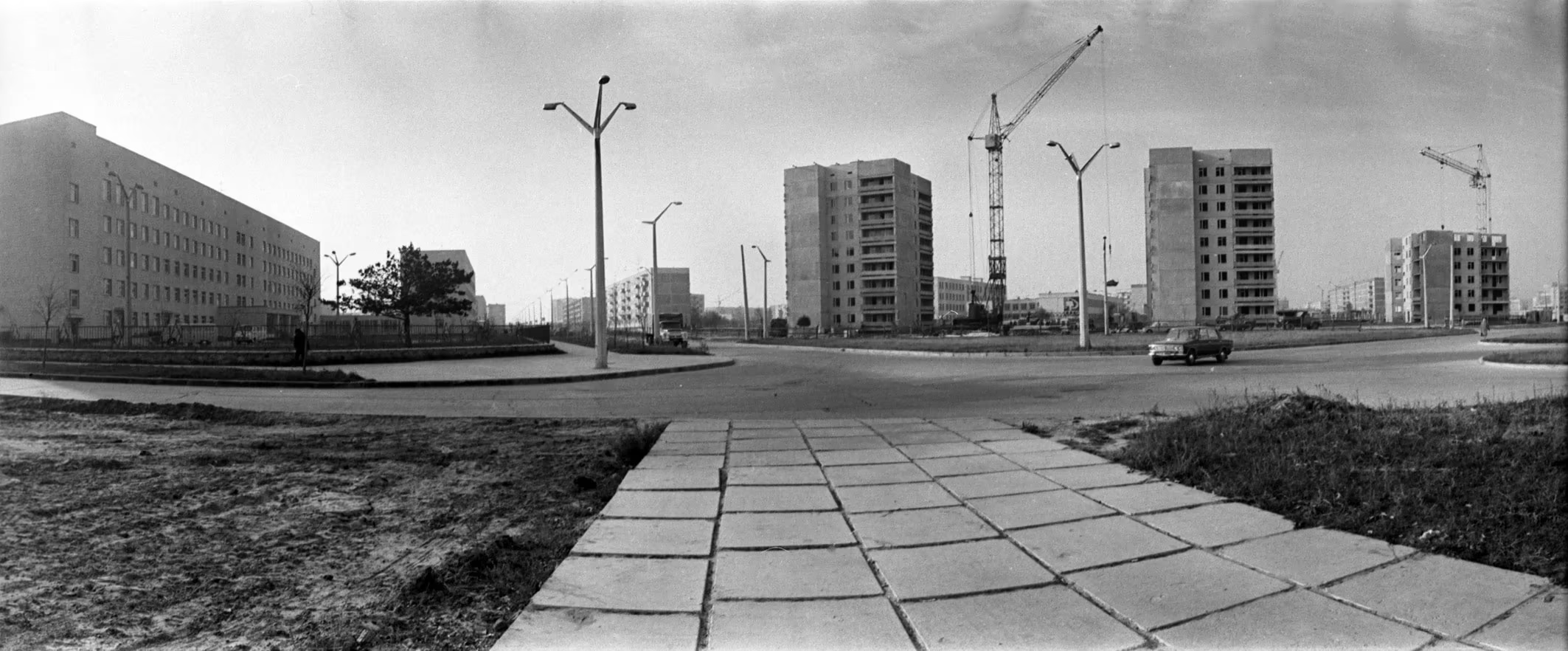
Construction of the city of Pripyat, Chernobyl District, Kyiv Region. 1977.

Construction of residential buildings in the town for Chernobyl NPP energy workers. February 1971.
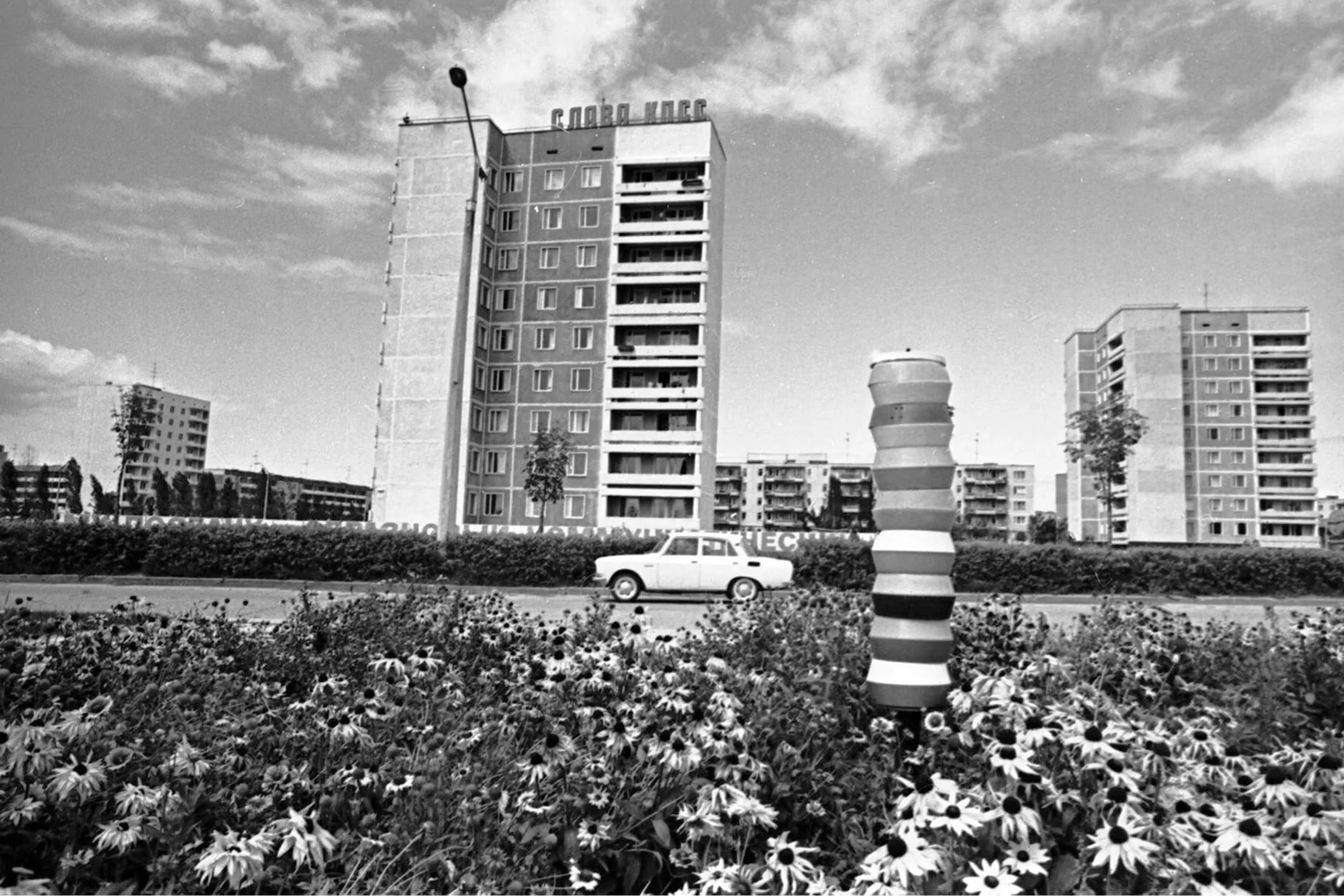
View of the city of Pripyat. August 1983.
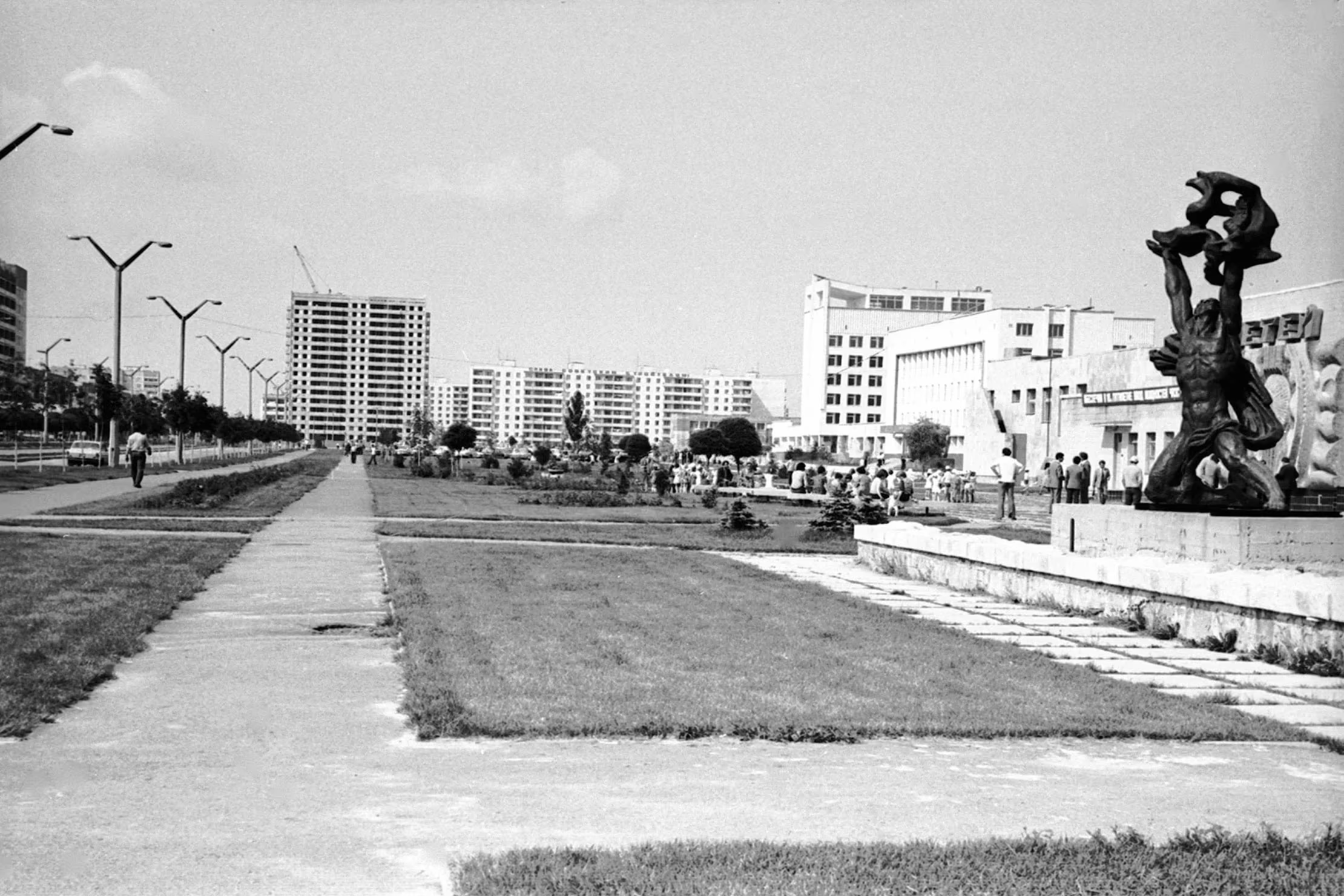
View of the main square of Pripyat. July 1980.

The destroyed Chernobyl Nuclear Power Plant, photographed in May 1986, a few weeks after the disaster.
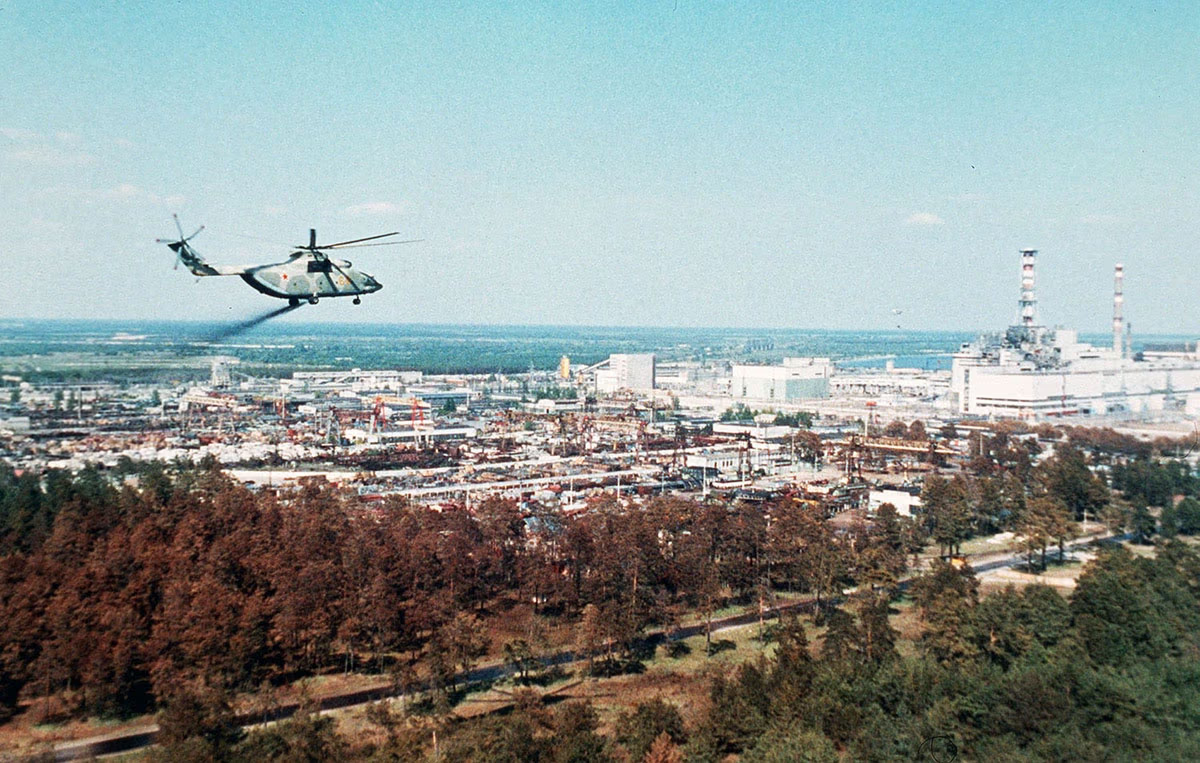
A military helicopter sprays sticky decontamination fluid to reduce the spread of radioactive particles around the Chernobyl Nuclear Power Plant, a few days after the disaster.

Reactor Unit 4.
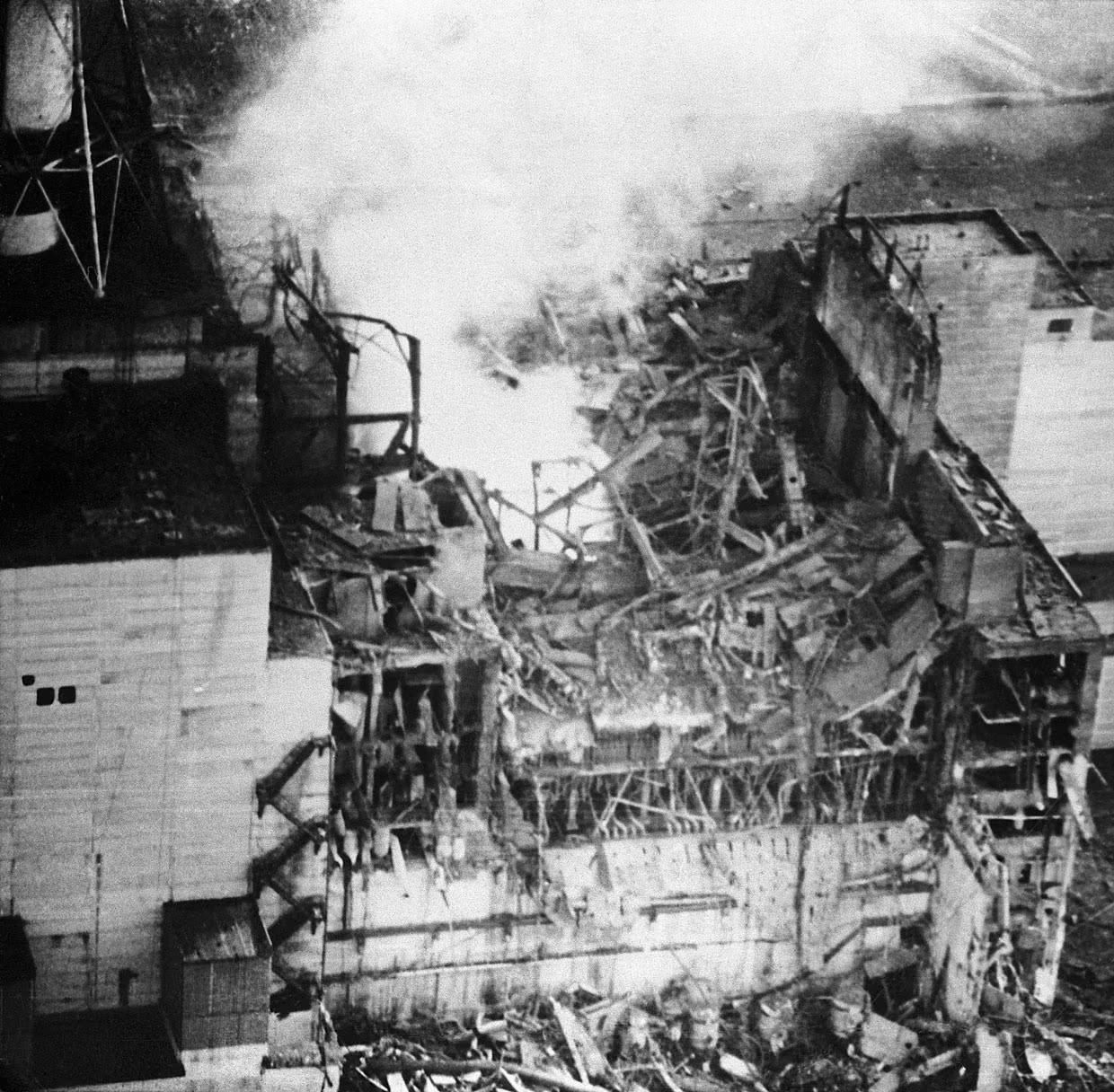
A photo taken shortly after the explosion, while the fire at the plant was still burning. The blaze lasted for about ten days.

A team of liquidators prepares to clear radioactive debris from the roof of Reactor No. 4.

Most of the liquidators were 35–40-year-old reservists and soldiers from chemical warfare units. Due to a shortage of specialized equipment, they had to sew their own protective clothing from lead sheets two to four millimeters thick to shield their backs and bone marrow.
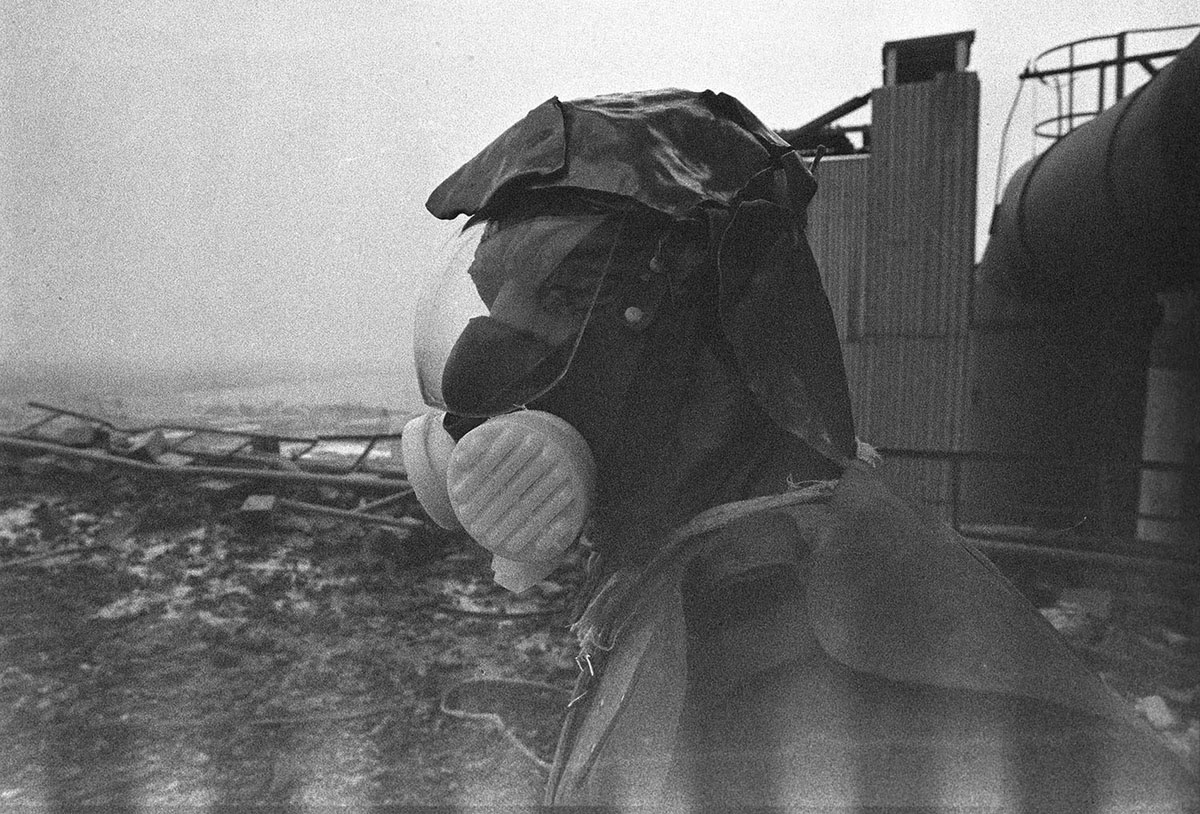
A liquidator with a homemade lead shield on his head cleans the roof of the third reactor.
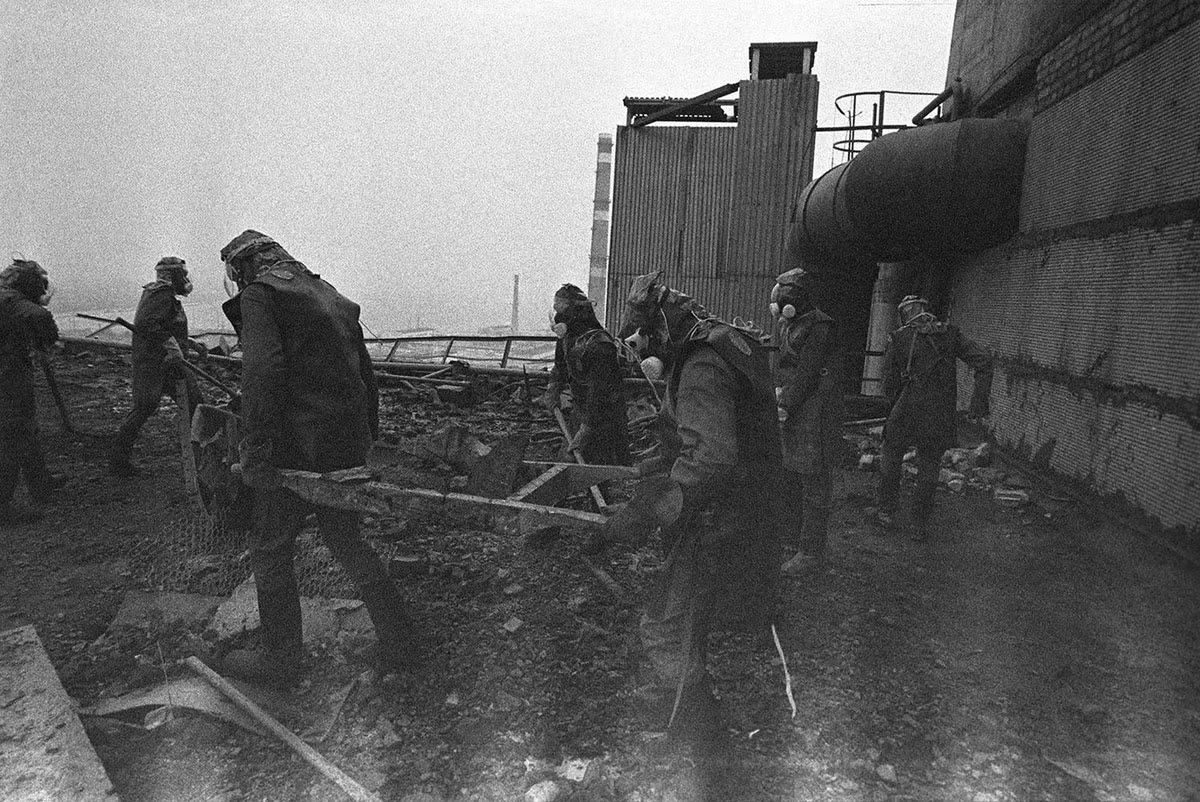
Liquidators clear the roof of the fourth reactor block, throwing radioactive debris down—onto the site where the sarcophagus would later be built. These "biological robots" could work for only a few seconds: approach the pile of debris, scoop it with a shovel, and throw it into the reactor ruins.
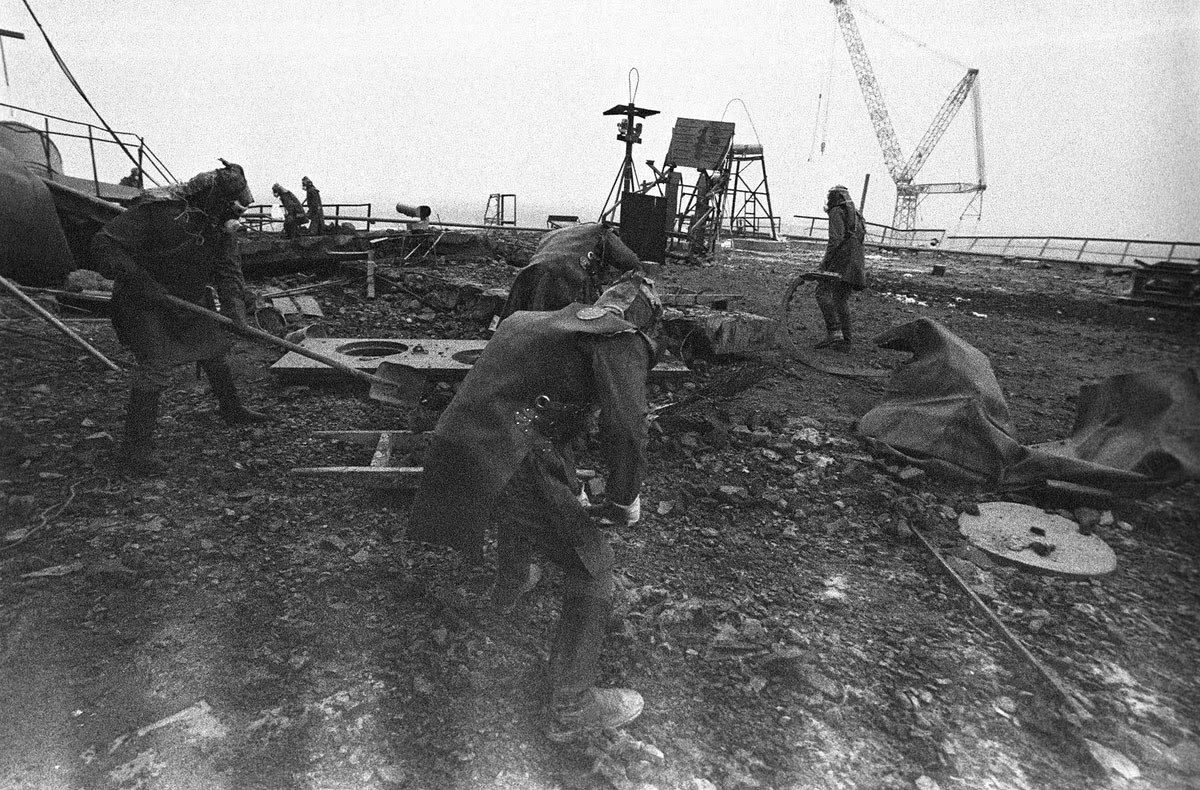
Liquidators clean the roof of the third reactor block. Initially, German, Japanese, and Soviet robots were used to remove the radioactive debris, but the equipment could not withstand the extreme radiation levels. Authorities then decided to deploy humans instead. In some areas, workers could stay no longer than 40 seconds—enough to receive the maximum lifetime radiation dose permitted for a human.
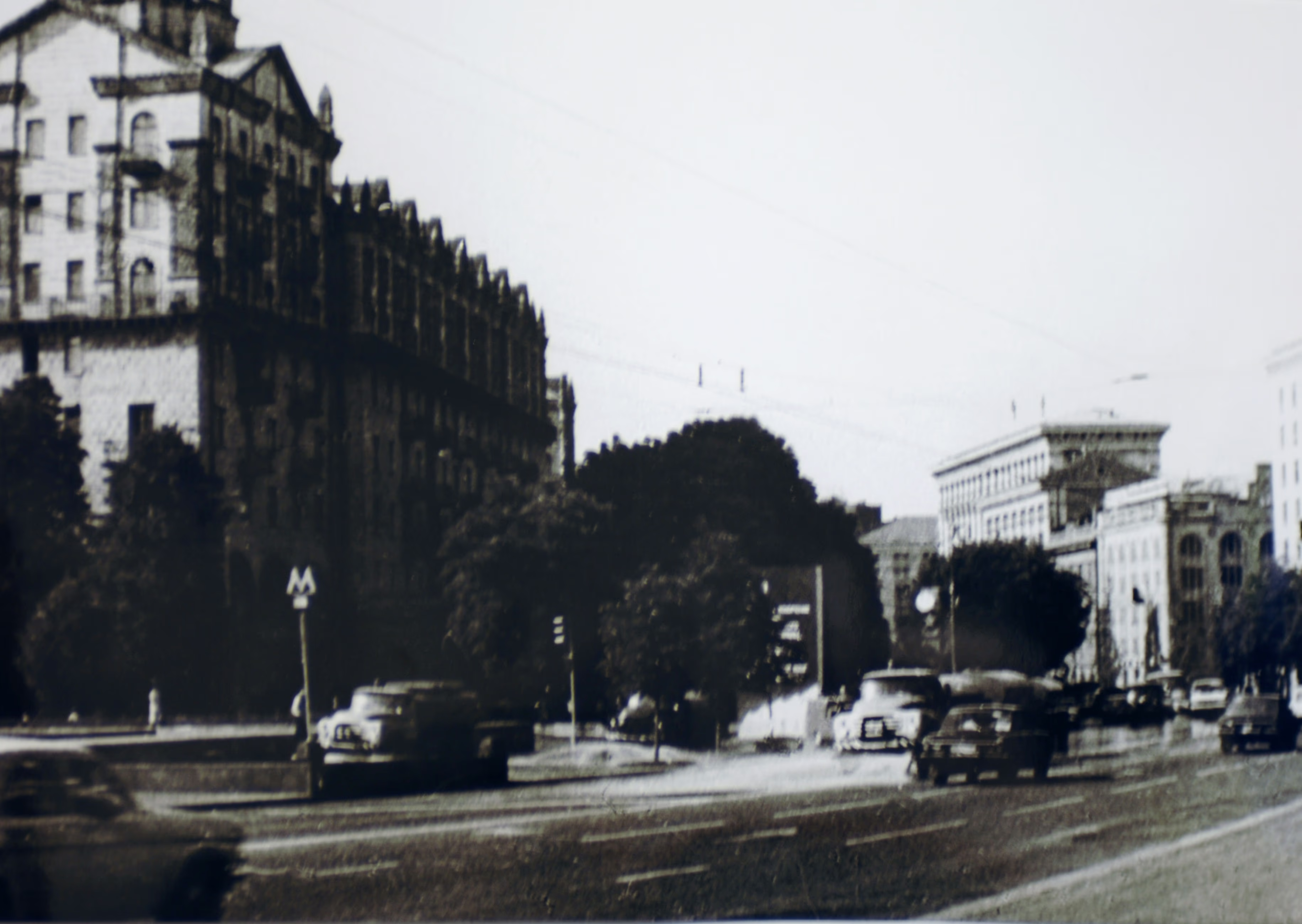
Decontamination of streets with water in Kyiv, located 94 km (as the crow flies) from the accident site. May 1, 1986.

A Soviet technician checks the radiation level of little Katya Litvinova during the inspection of residents in the village of Kopylovo near Kyiv. May 9, 1986.
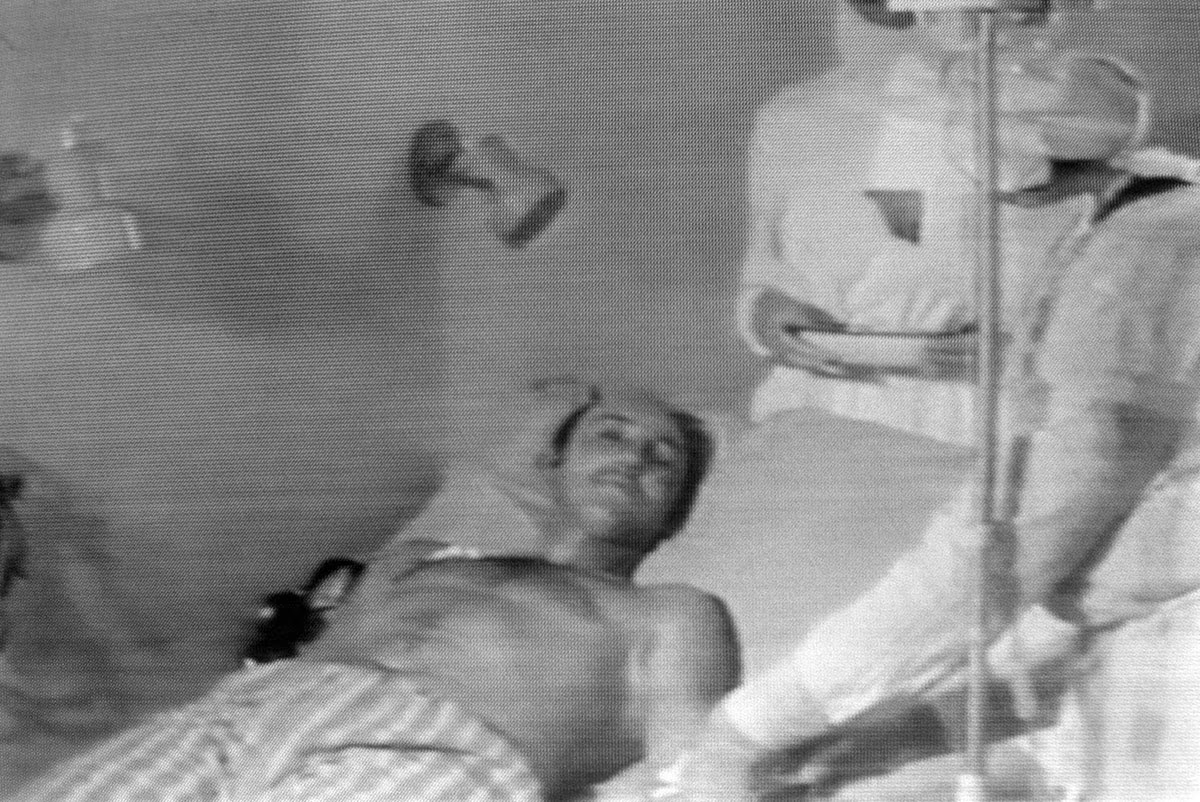
A frame from Soviet television: a man injured in the Chernobyl nuclear power plant explosion receives medical assistance.
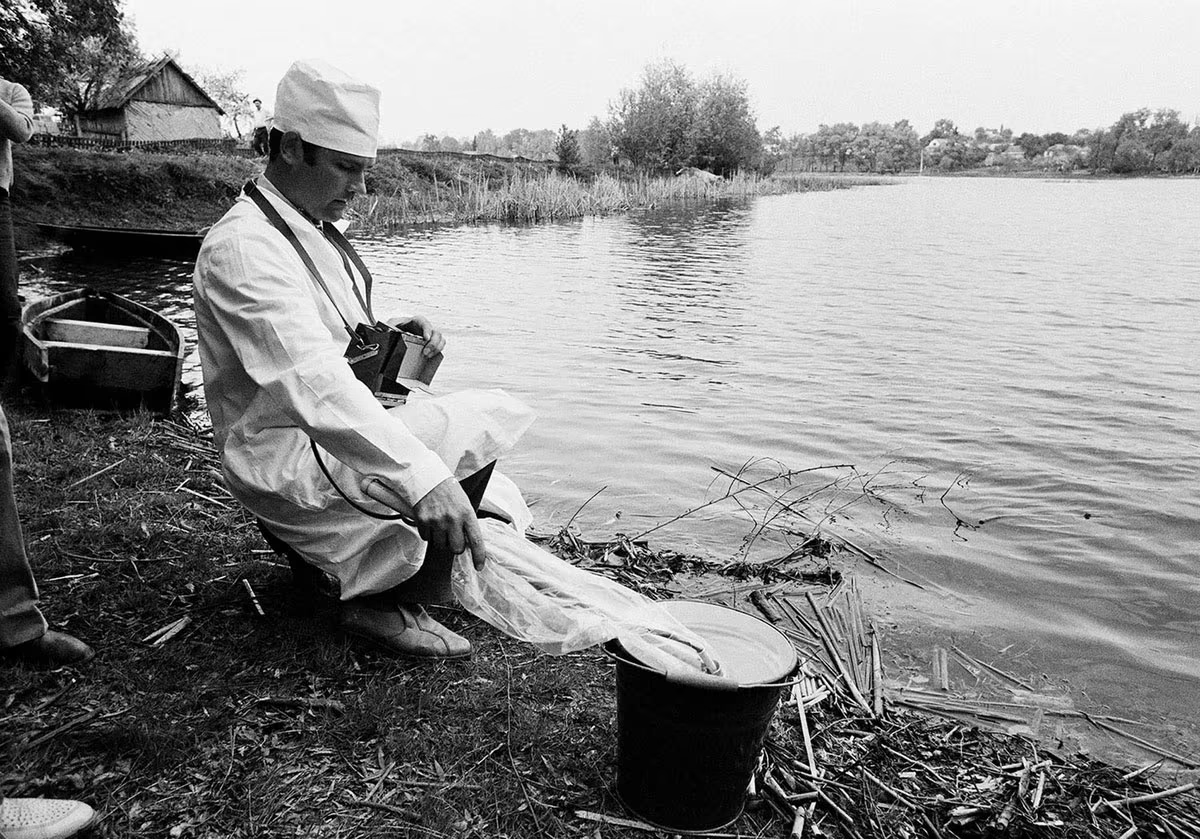
A Soviet technician tests water from a stream near Kyiv for radiation levels. The photo was taken on May 9, 1986. After the Chernobyl nuclear disaster, such checks were conducted hourly to ensure the safety of the water supply.
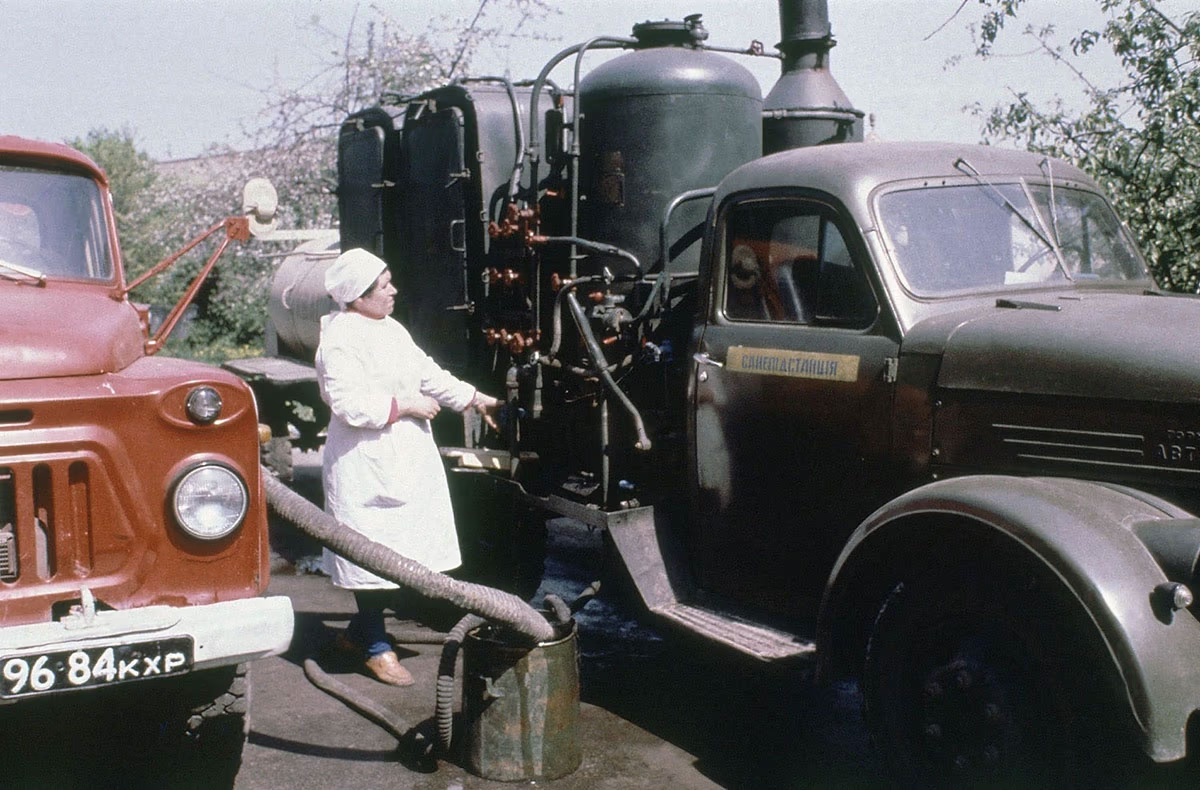
A Soviet technician prepares a tanker truck with a solution for decontaminating clothing and equipment. The photo was taken in Kyiv on May 9, 1986.

A photograph taken from a helicopter a few days after the disaster.
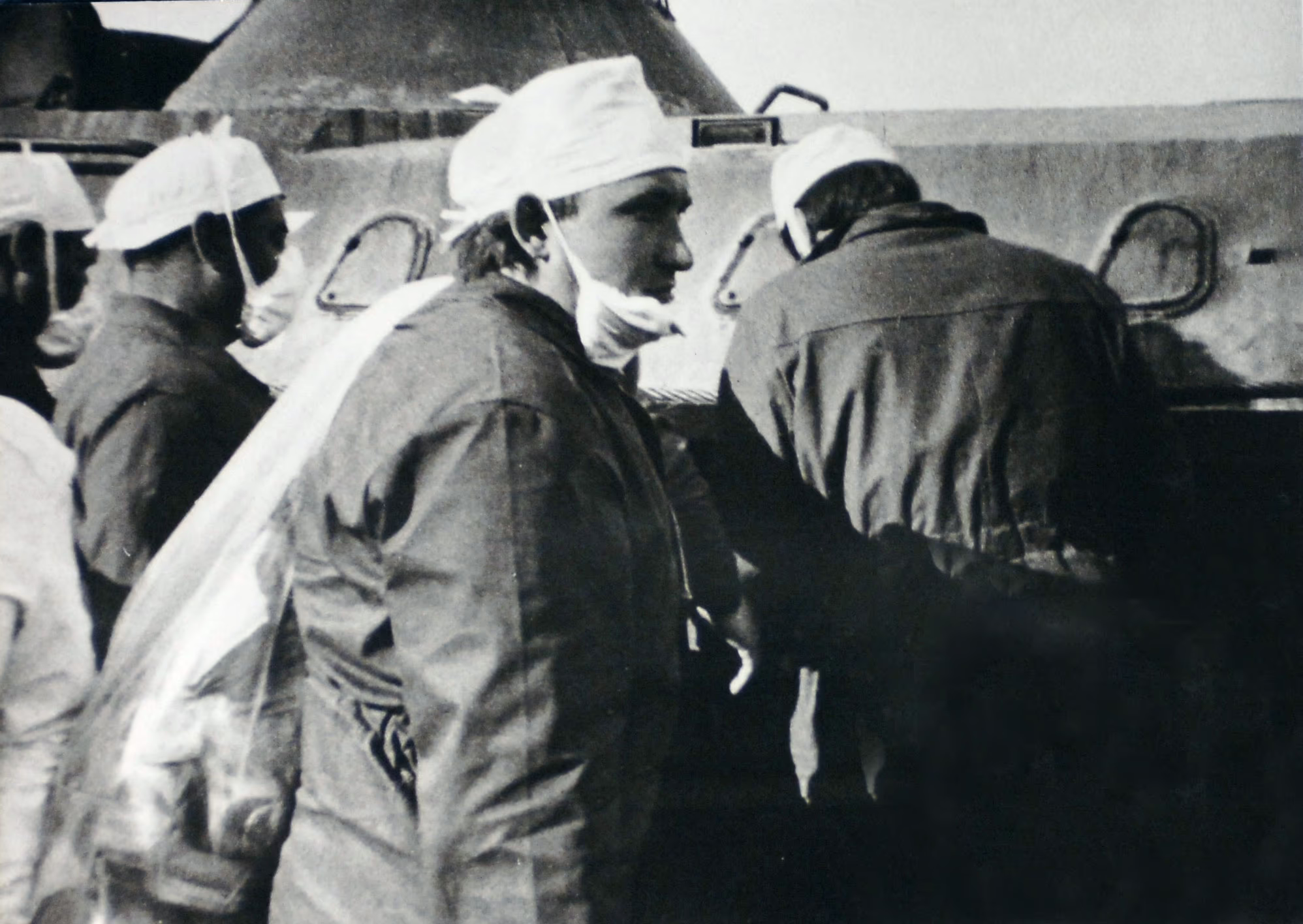
Liquidators receive special food rations—condensed milk and canned fish.
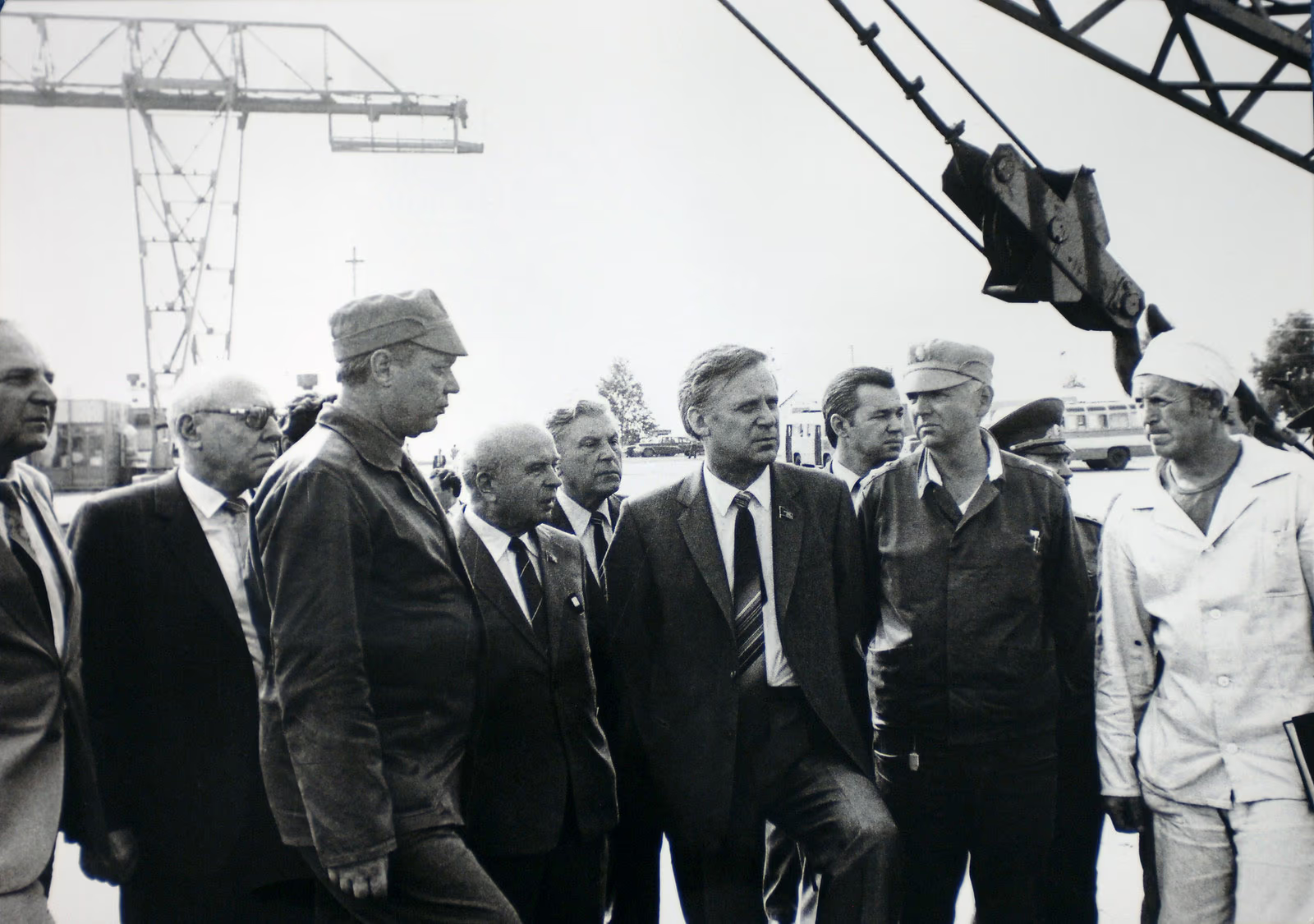
Chairman of the Council of Ministers of the USSR, Nikolai Ryzhkov, arrives at the disaster site to personally assess the progress of the cleanup efforts.
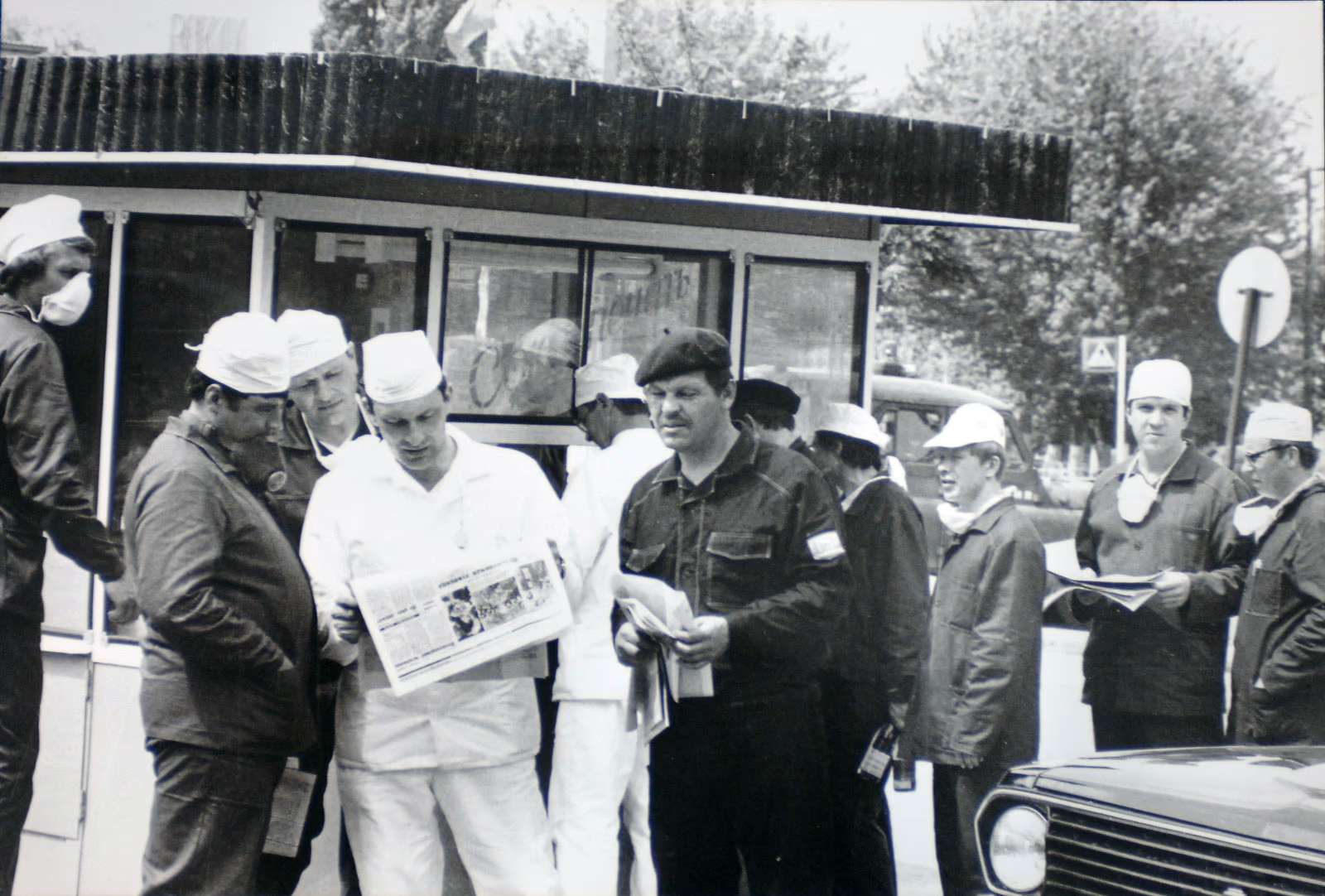
Fresh newspapers with information on the progress of the cleanup operations at the Chernobyl Nuclear Power Plant were delivered daily to the disaster zone.
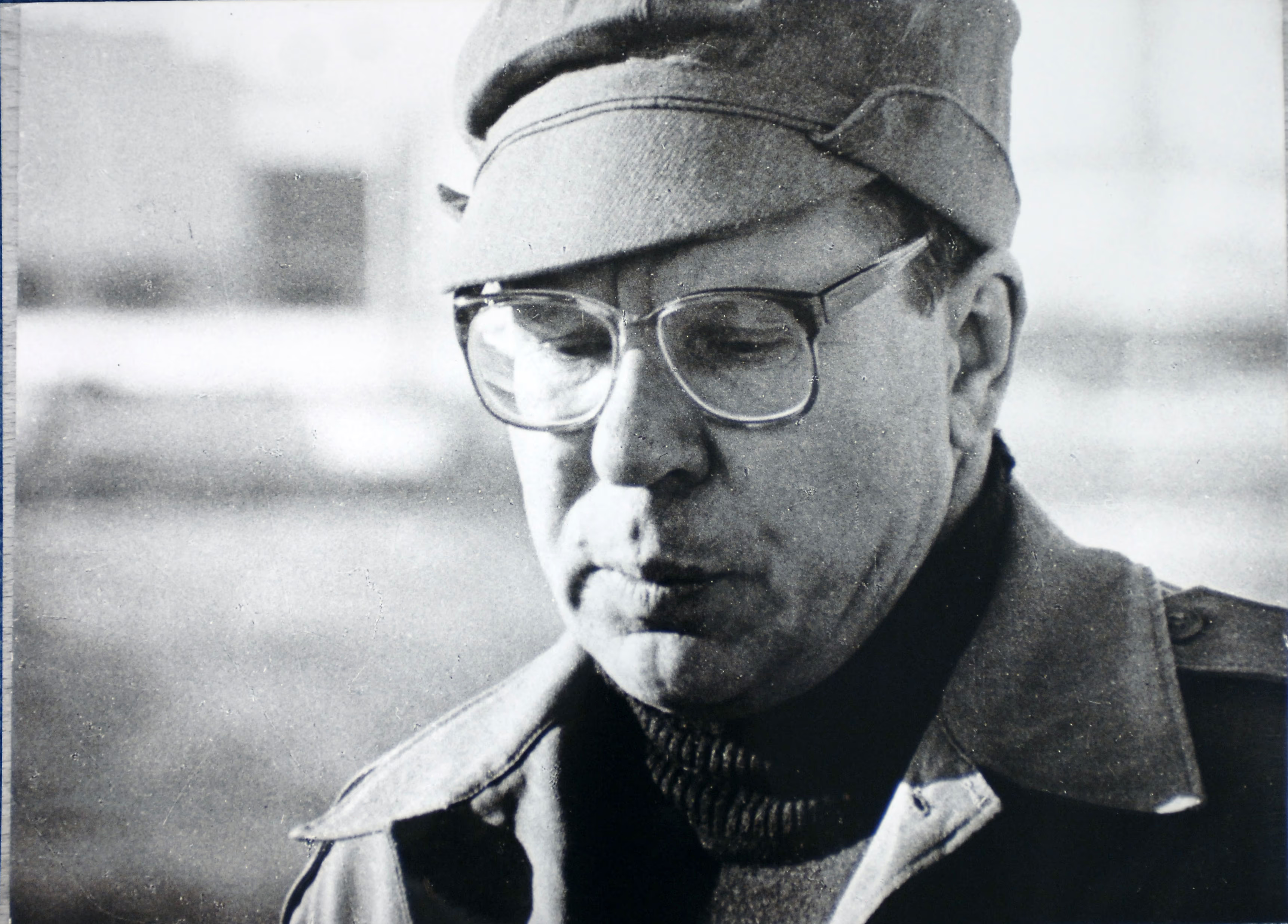
Valery Legasov—an academician and deputy director of the Kurchatov Institute—played a key role in the cleanup efforts after the Chernobyl disaster. His actions in organizing emergency measures saved thousands of lives. Two years after the catastrophe, Legasov took his own life, leaving behind audio recordings criticizing the system that had concealed the scale of the tragedy.
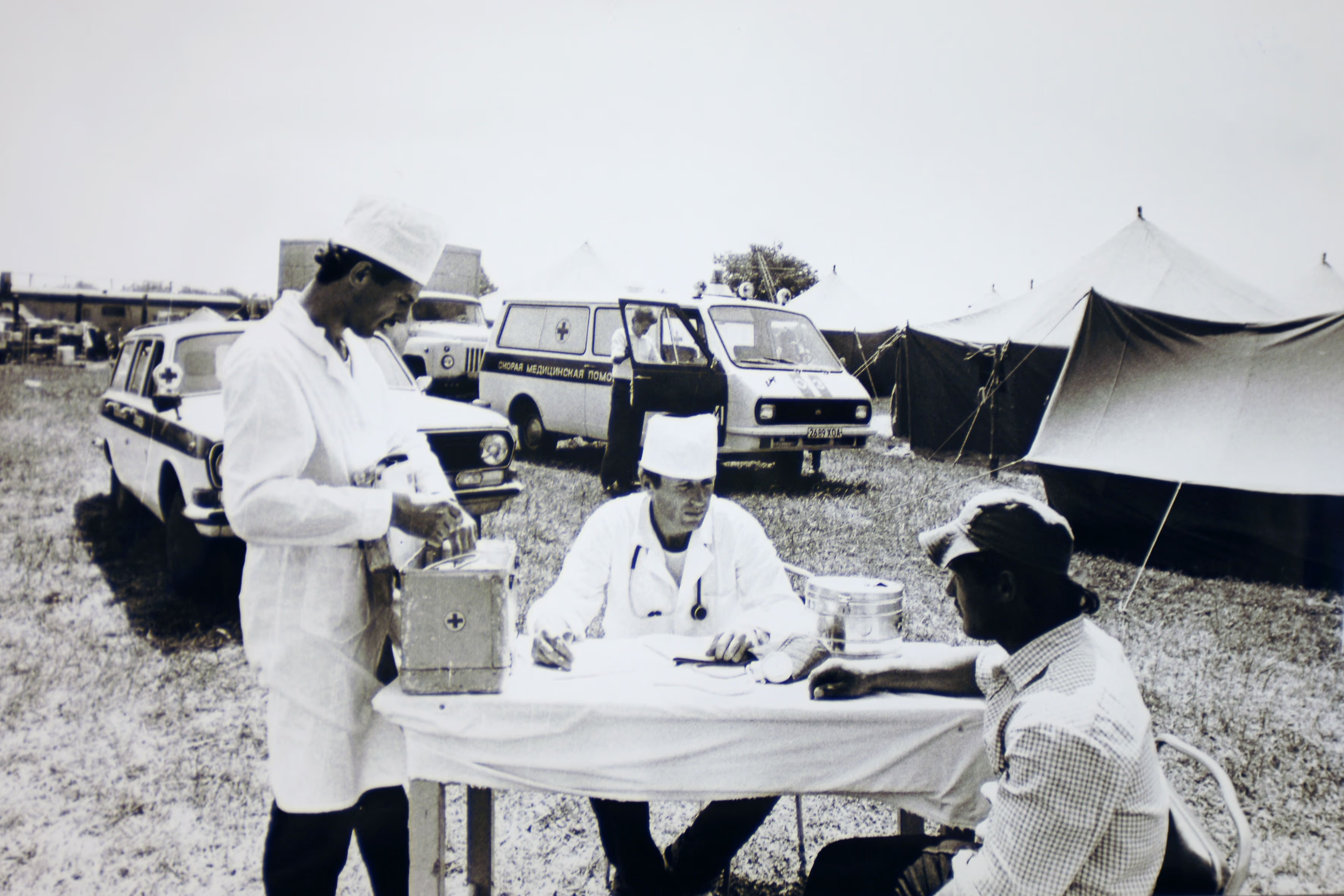
First aid stations operated around the clock.

The crew of a Mi-8 helicopter before a flight to the Chernobyl NPP area. Pilots delivered food, medicine, and other essential supplies to the zone.
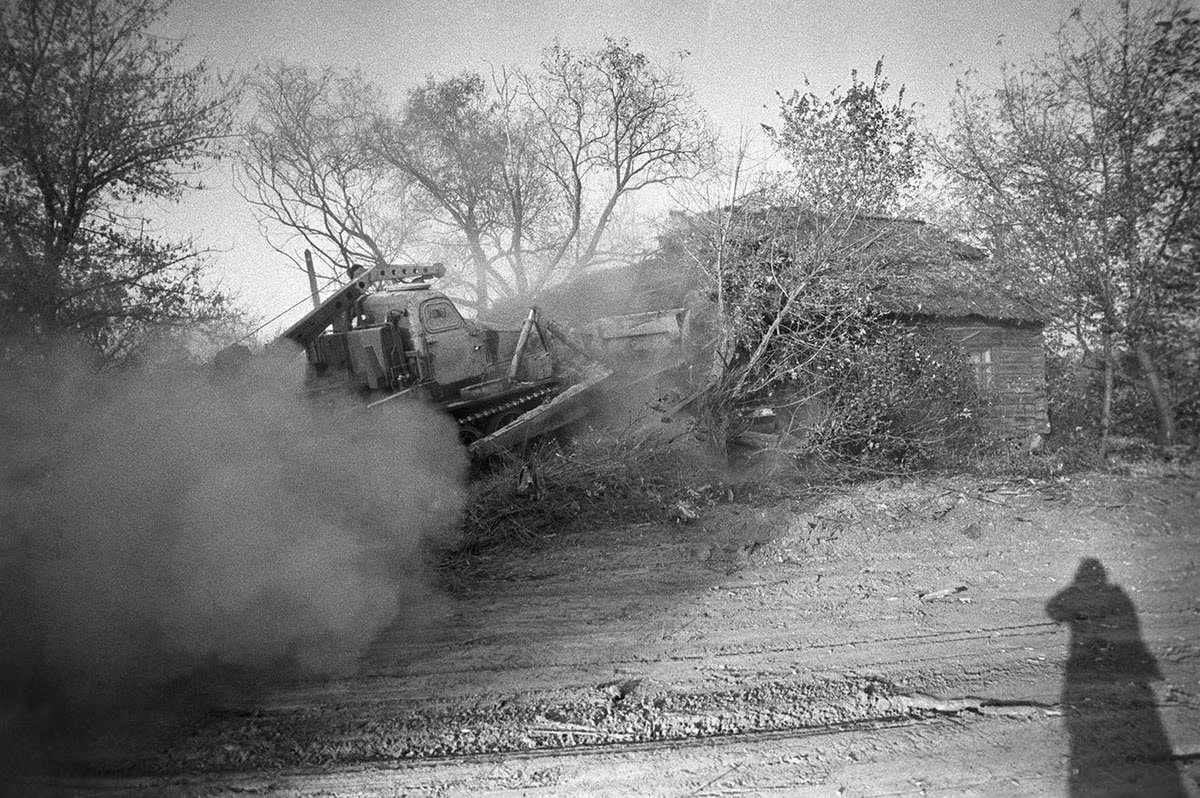
A bulldozer digs a large trench in front of a house to later bury the building under soil. This method was used to entomb entire villages contaminated after the Chernobyl disaster.
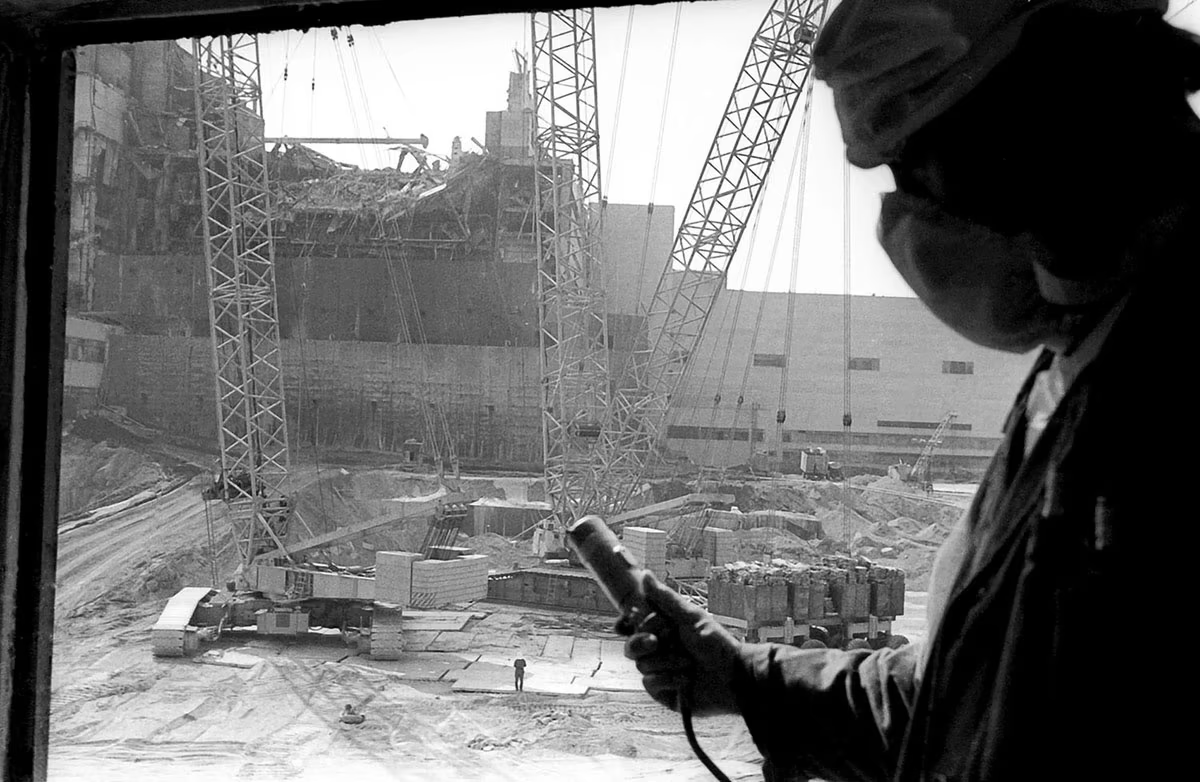
A Chernobyl Nuclear Power Plant worker measures radiation levels with a dosimeter. In the background—the sarcophagus under construction, intended to contain the destroyed reactor. Photo taken in 1986.

By October 1986, the fourth reactor unit—the epicenter of the disaster—had been enclosed under a sarcophagus as part of ongoing efforts to mitigate the aftermath and ensure safety.
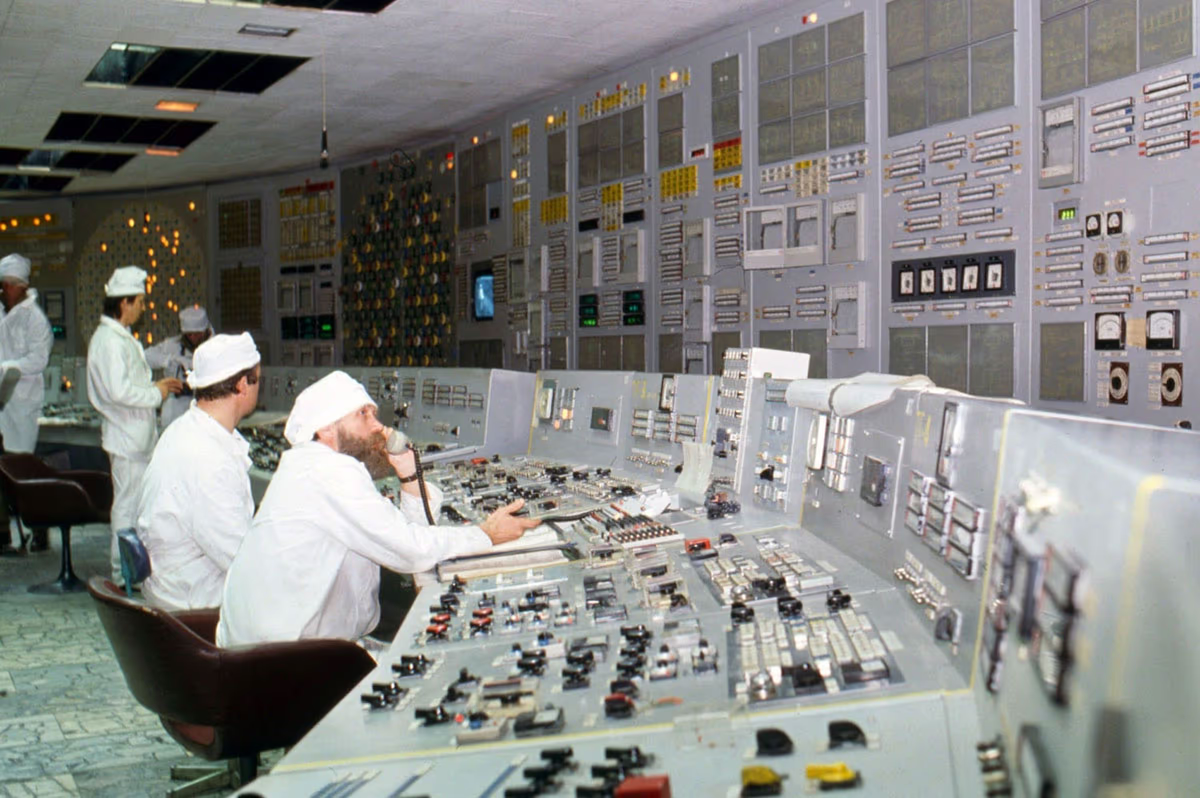
The interior of the still-operating section of the Chernobyl Nuclear Power Plant, photographed several months after the disaster in 1986.
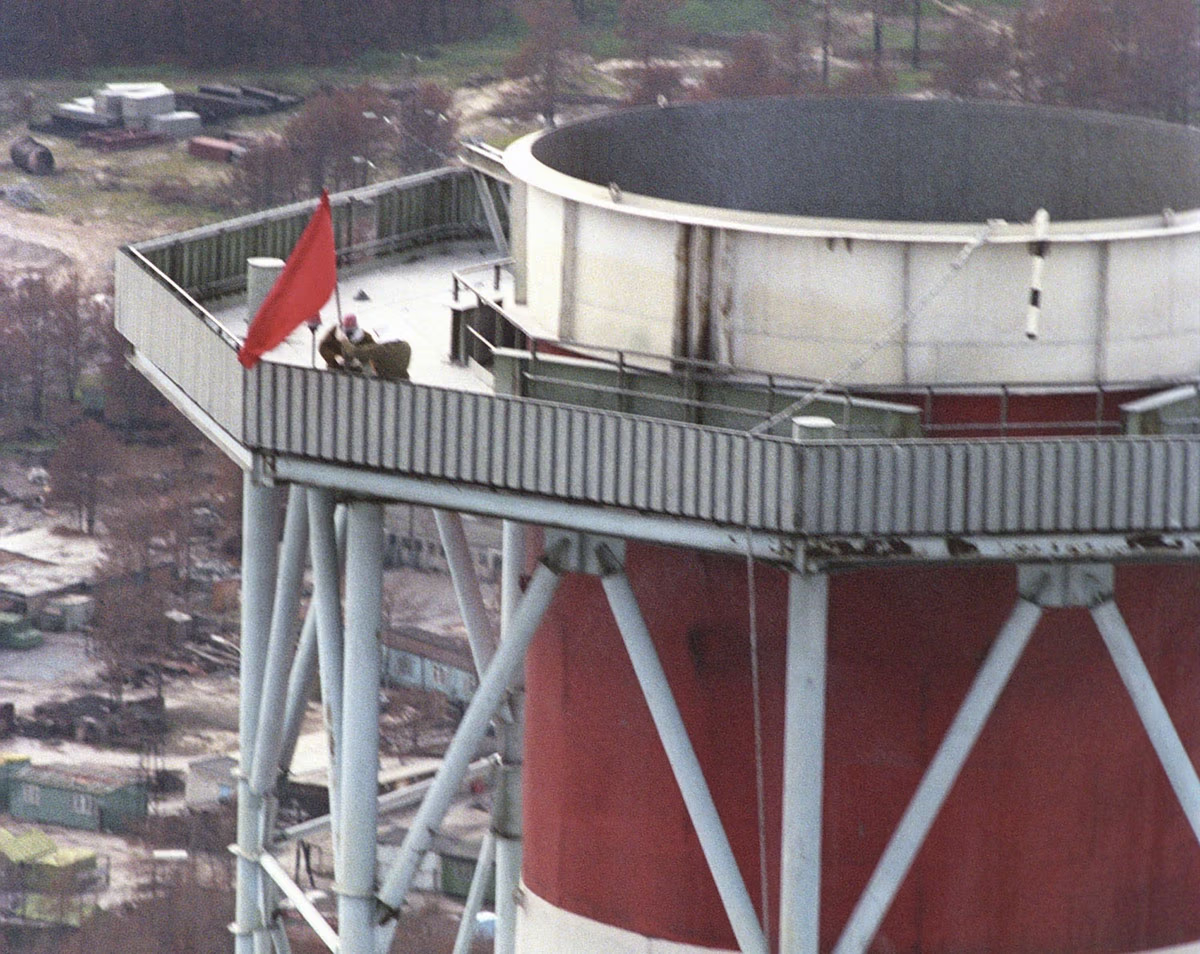
Under orders from Soviet authorities, three liquidators climbed to the top of the smokestack above the destroyed Reactor No. 4 amidst deadly radiation levels and raised a red flag. They were given only nine minutes to complete the task—any longer would have been life-threatening. As a reward, the liquidators received a bottle of Pepsi and a day off.

One of the streets of Pripyat after the Chernobyl disaster. 1989.
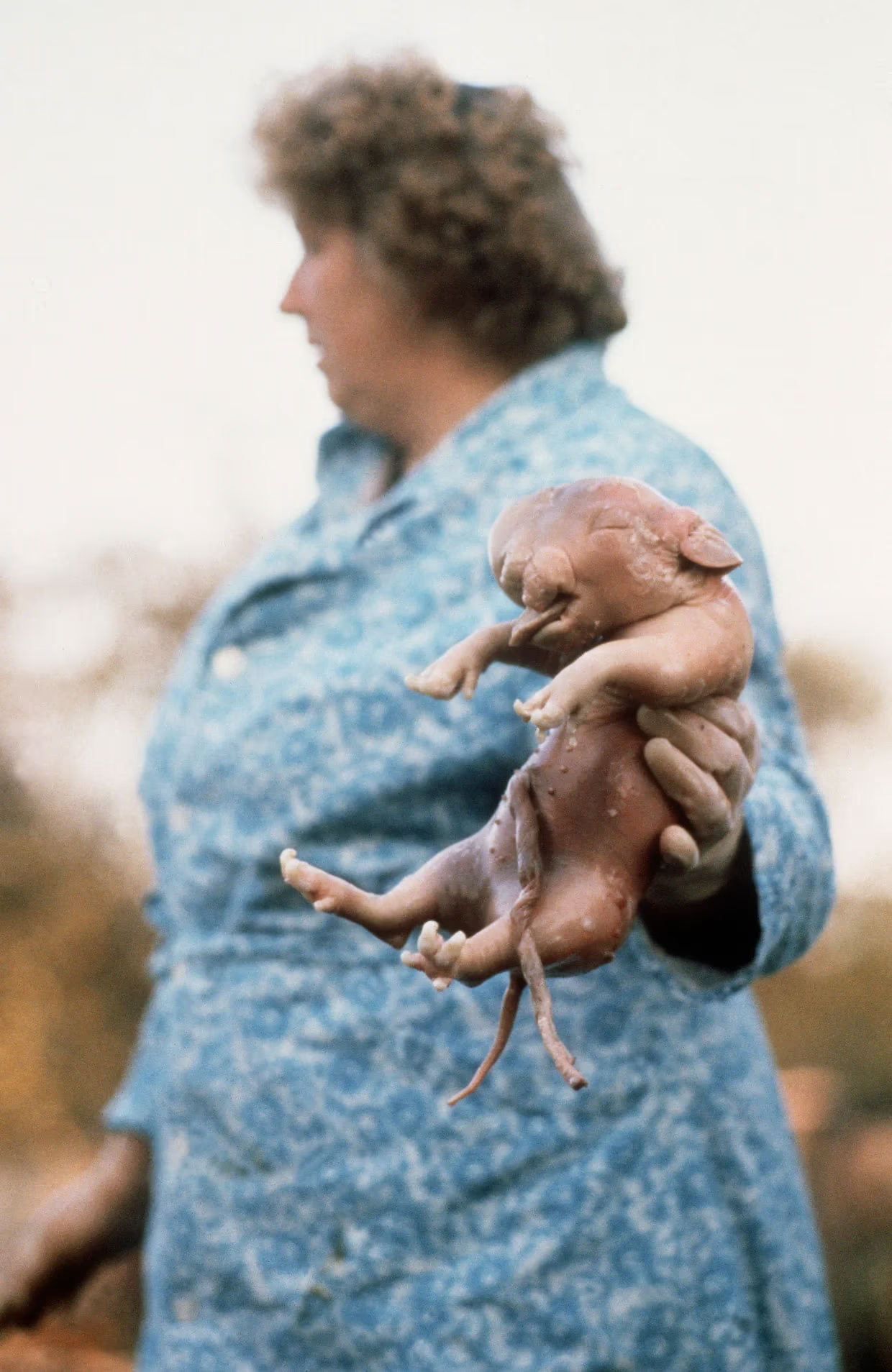
A local resident shows a newborn piglet with congenital defects—one of the many victims of radiation contamination after the Chernobyl disaster. October, 1989.
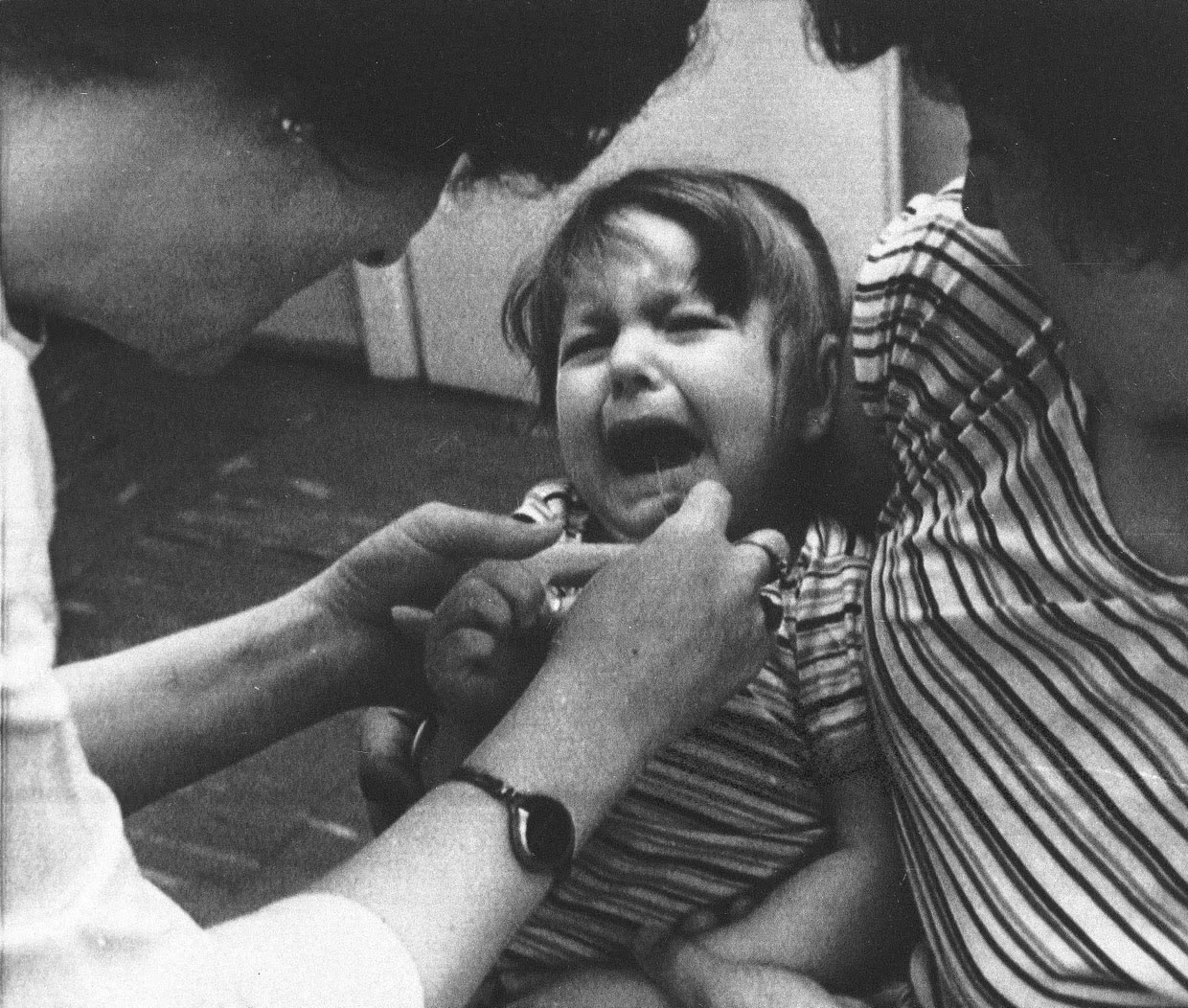
In May 1986, at a children's clinic in Warsaw, a nurse gives a three-year-old girl an iodine solution to protect against possible radiation poisoning after the Chernobyl disaster.
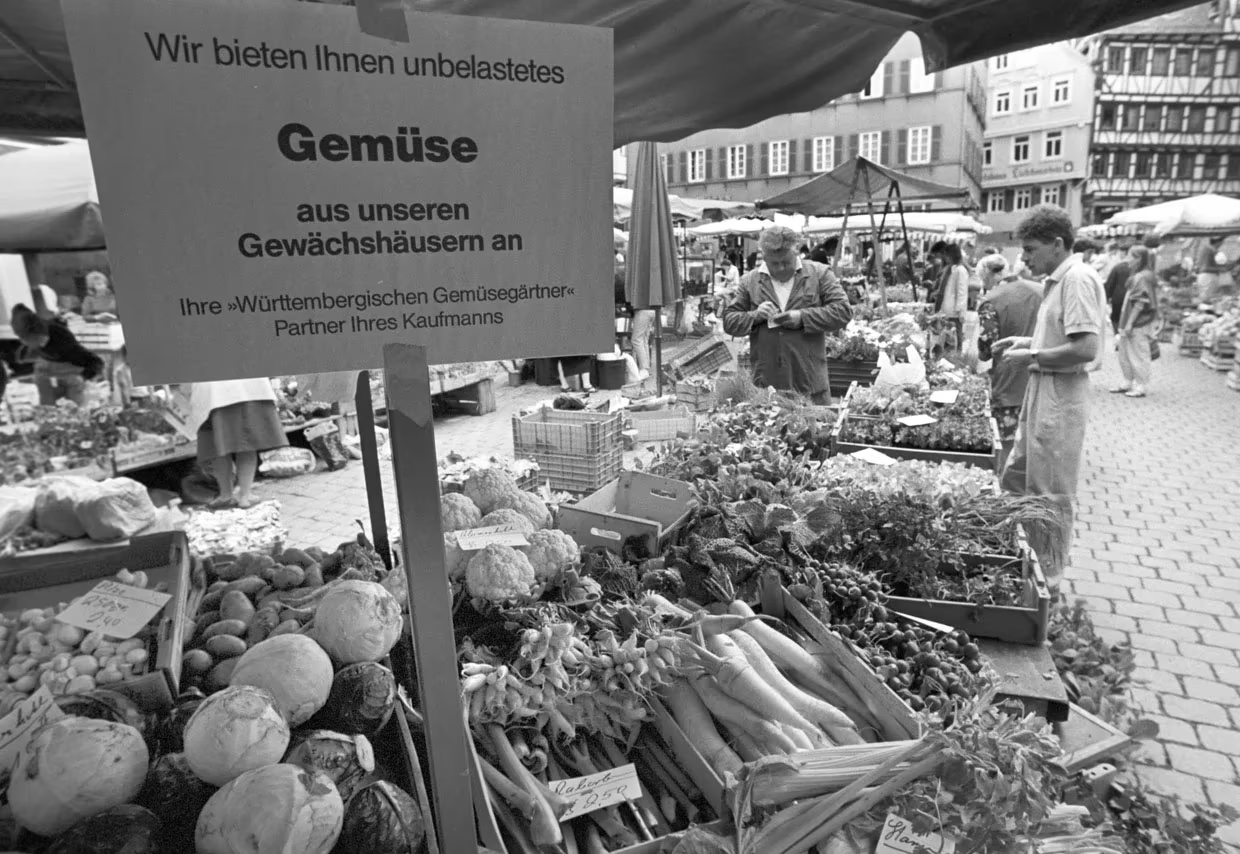
A sign at a market in Frankfurt in May 1986 informs that the vegetables are not contaminated with radiation.

News about the nuclear accident at the Chernobyl Nuclear Power Plant in the British press.

A Swedish farmer in protective clothing moves feed contaminated by the Chernobyl radioactive cloud. June 1986.
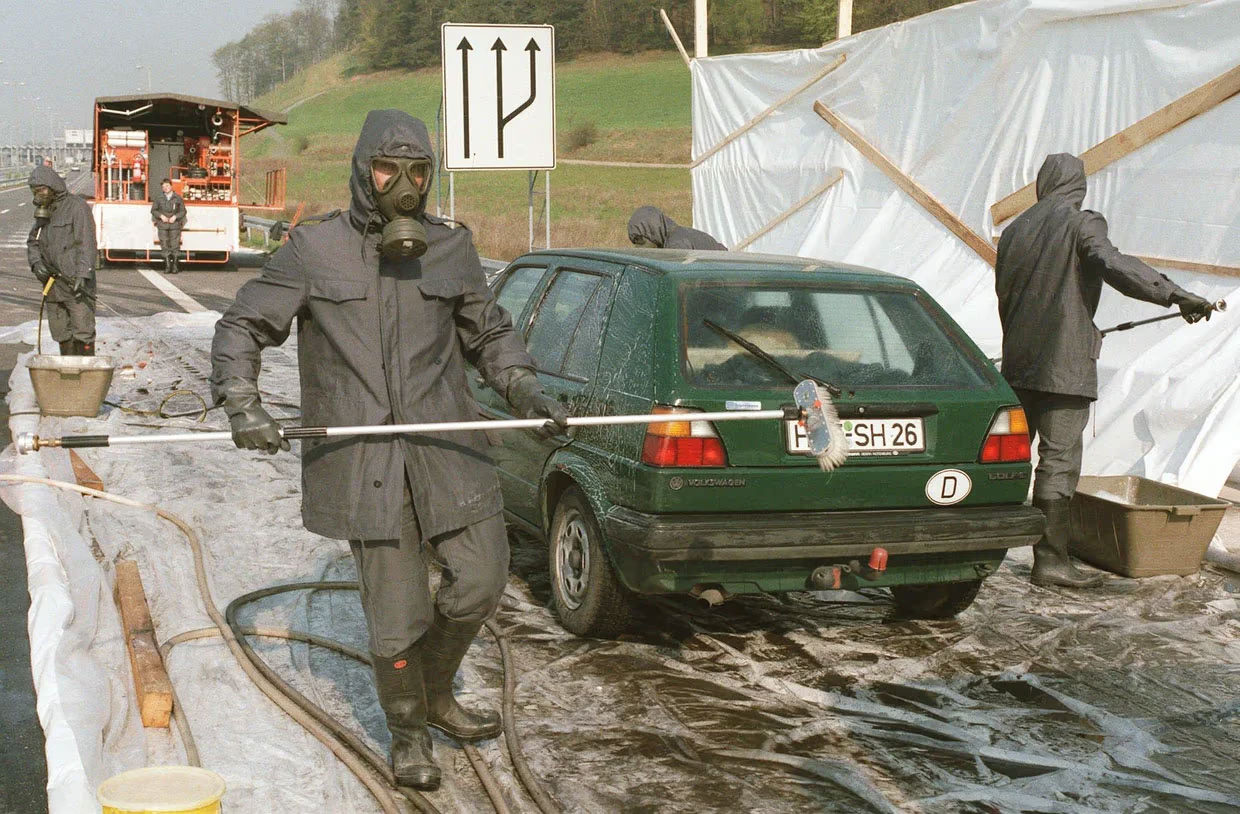
Firefighters in protective suits decontaminate vehicles at the German border. The cars were arriving from Poland and were significantly contaminated. May 1986.

An abandoned city hospital in Pripyat—a town built in the 1970s just a few kilometers from the Chernobyl Nuclear Power Plant to house plant workers and their families. September 30, 2015.

The abandoned maternity ward of Pripyat's hospital decades after the disaster. Due to areas of persistently high radiation, this territory will remain uninhabitable for hundreds of years.
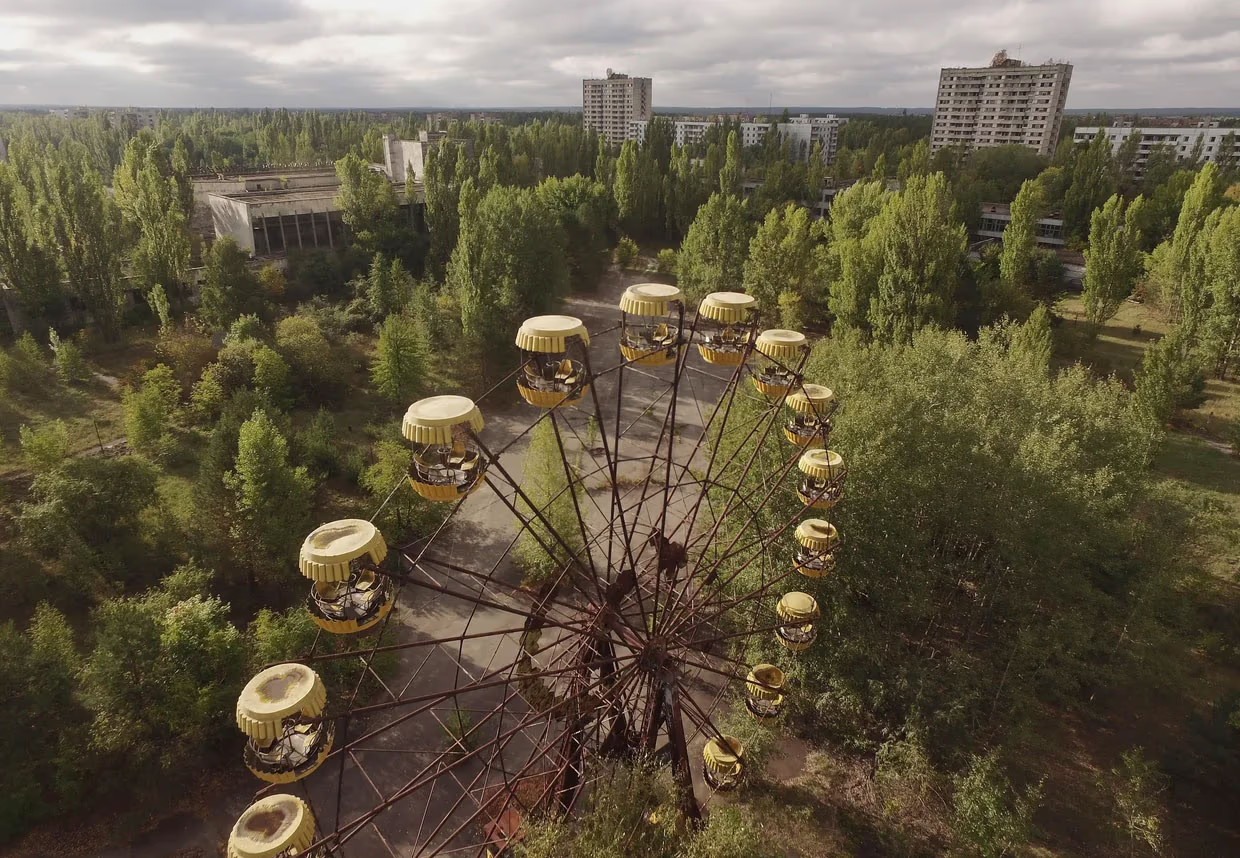
The abandoned city of Pripyat. 2016.

Tourists at the abandoned Ferris wheel in Pripyat. Before the war, excursions frequently visited this site.

This photo was taken in Pripyat in 2017. It shows a Geiger counter recording 679,000 counts per minute next to a metal claw contaminated with radiation.
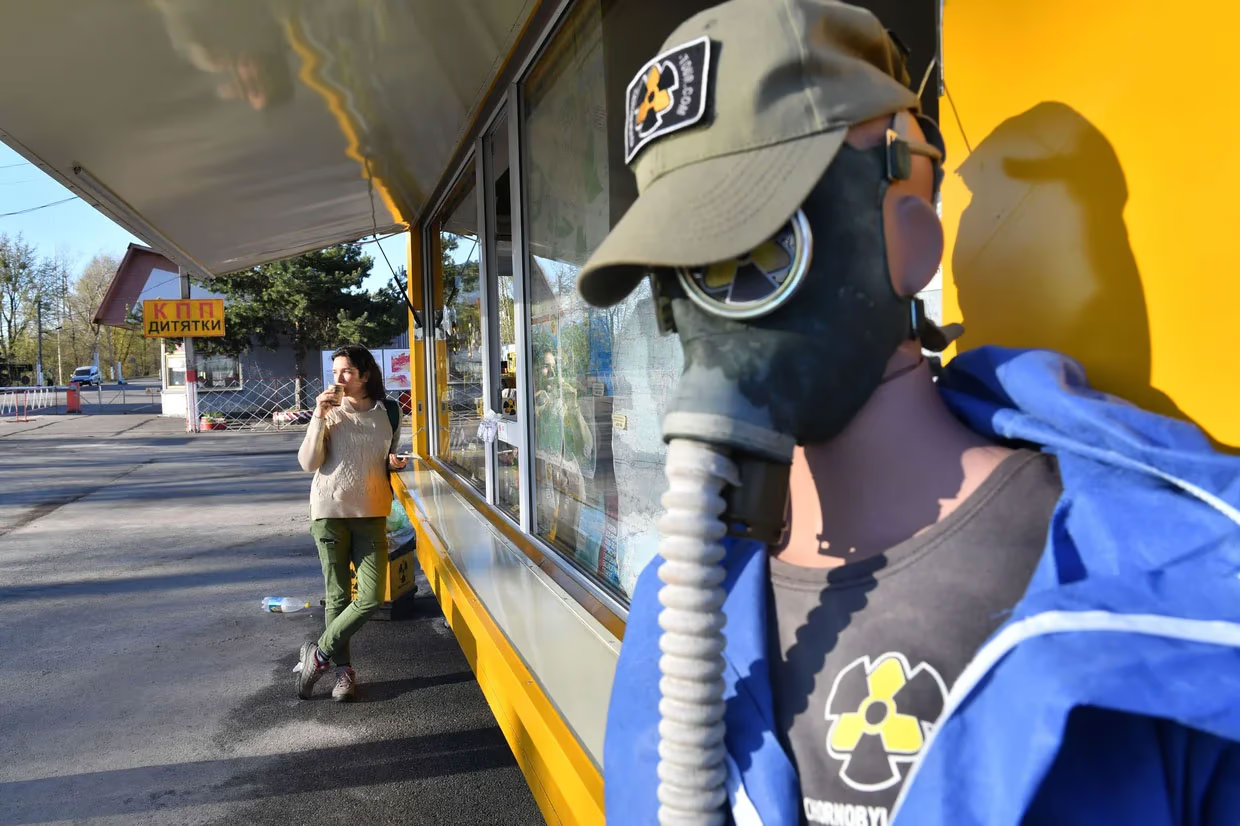
A souvenir shop at the checkpoint in the Chernobyl Exclusion Zone during a tourist tour. April 23, 2018.
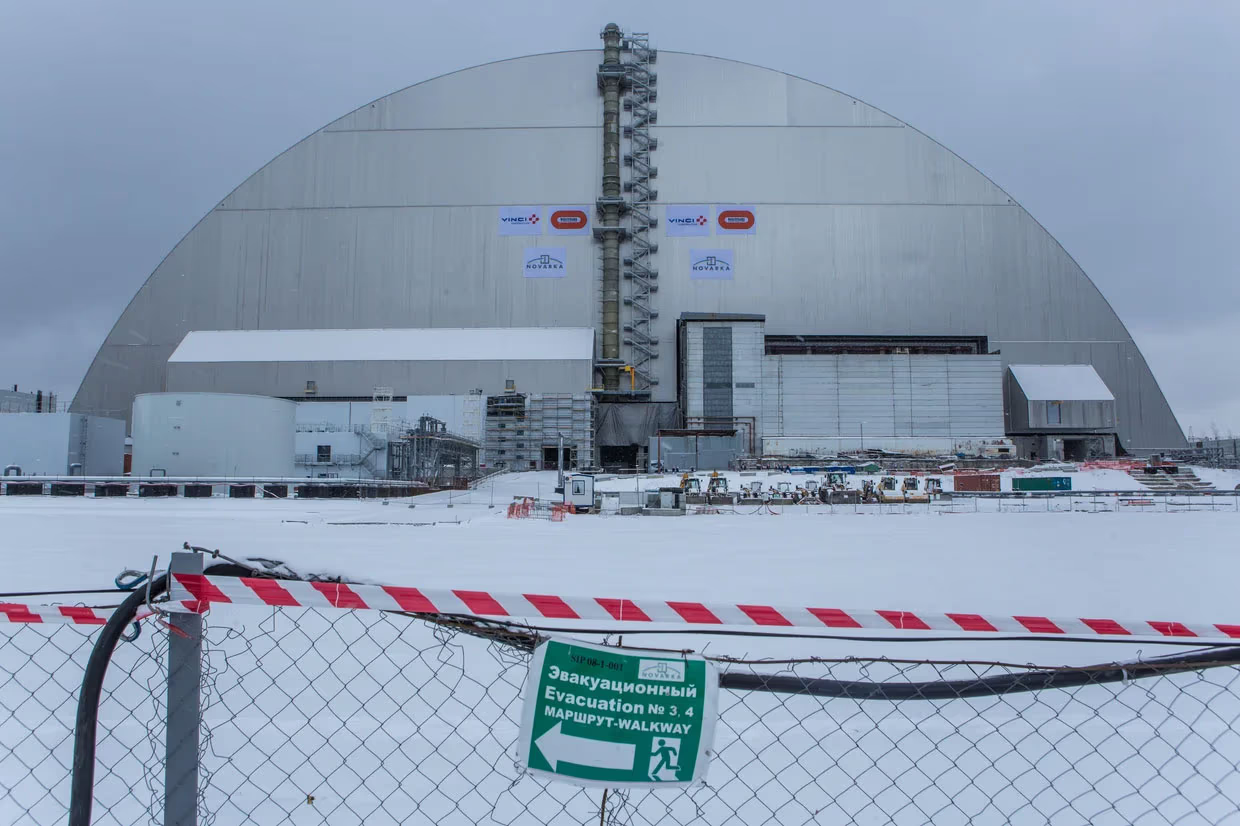
The new "Shelter-2" sarcophagus completely covered the destroyed reactor on November 29, 2016.
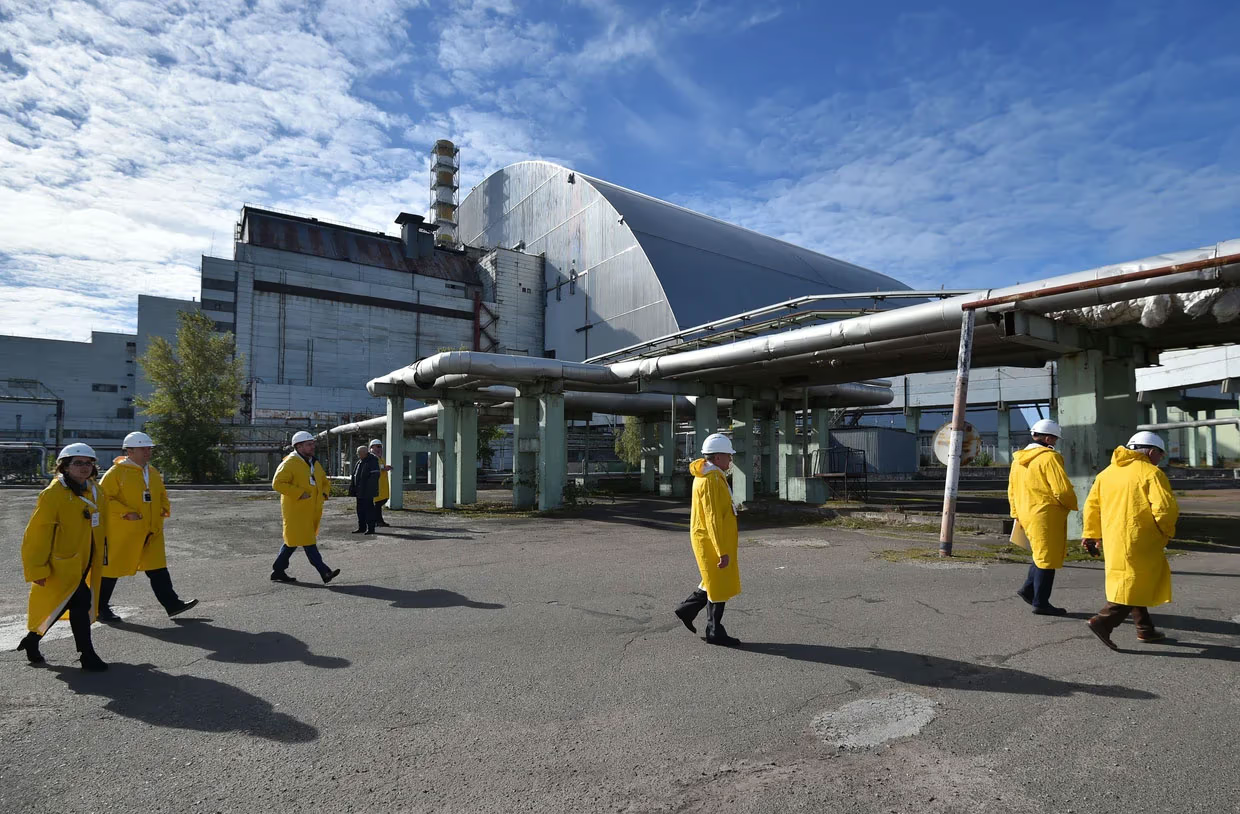
Members of the inspection commission walk past the new sarcophagus over the fourth reactor of the Chernobyl Nuclear Power Plant on October 5, 2018—shortly before the opening ceremony of a new one-megawatt solar power plant.

Positions of Russian troops in the "Red Forest" near the Chernobyl Exclusion Zone. March 2022.
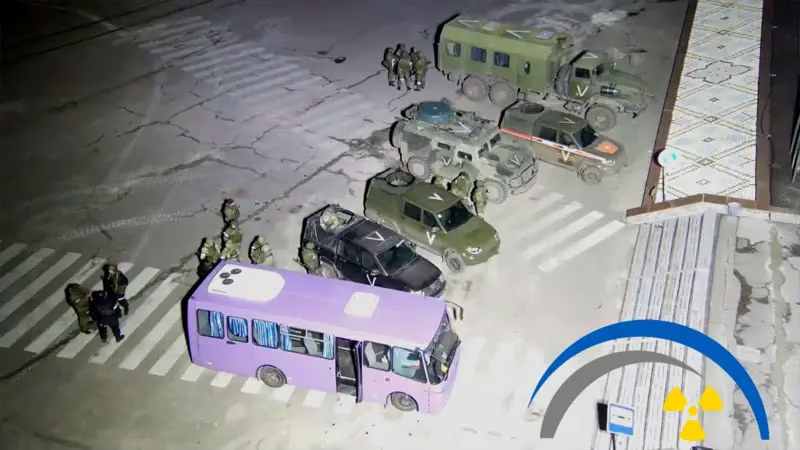
Russian military vehicles in the Chernobyl Exclusion Zone. March 2022.

Fire on the roof of the Chernobyl sarcophagus after a drone crash. February 2025.

Aftermath of the drone crash on the Chernobyl sarcophagus.